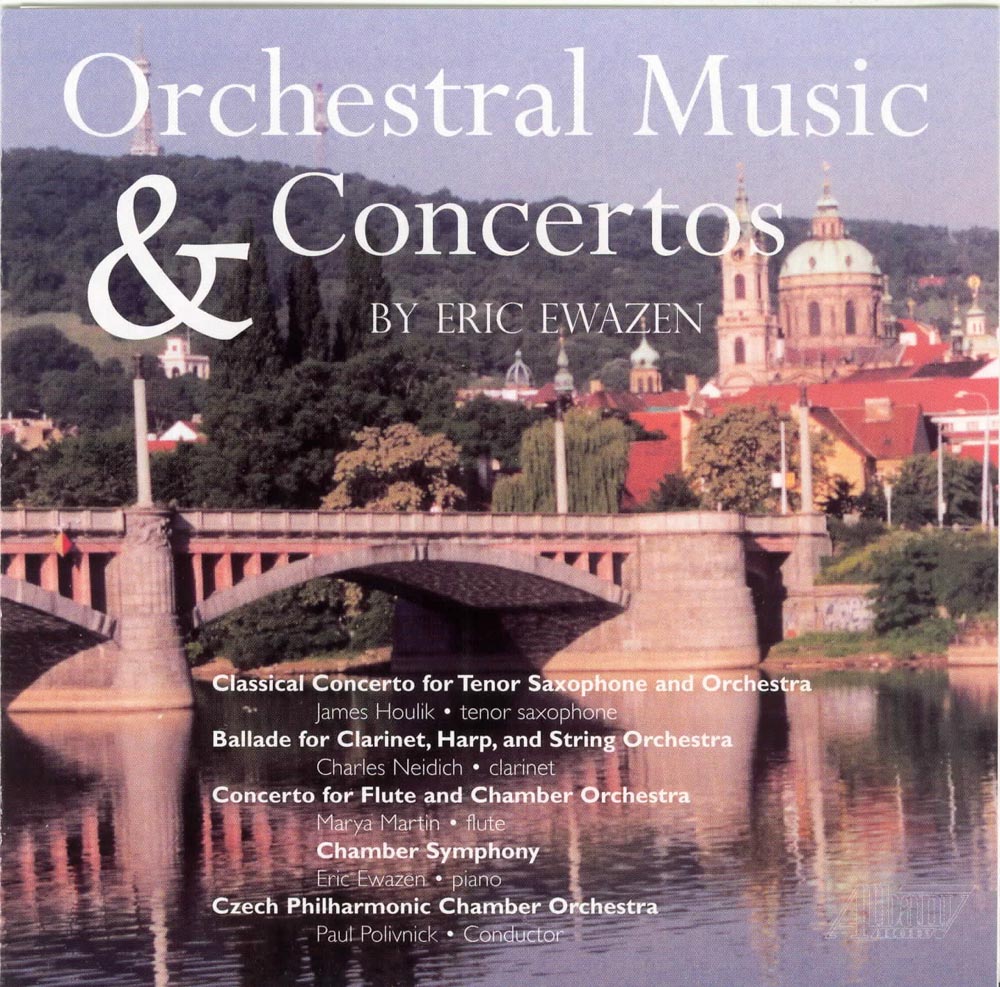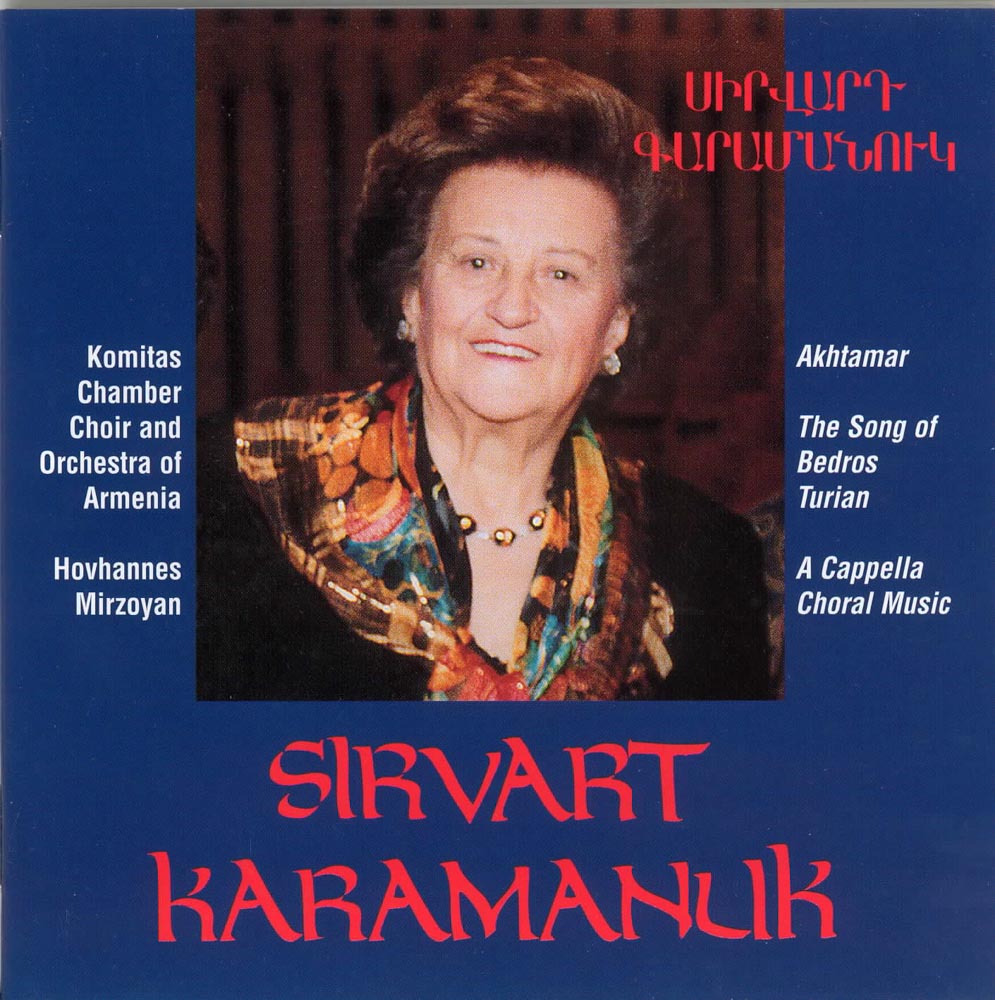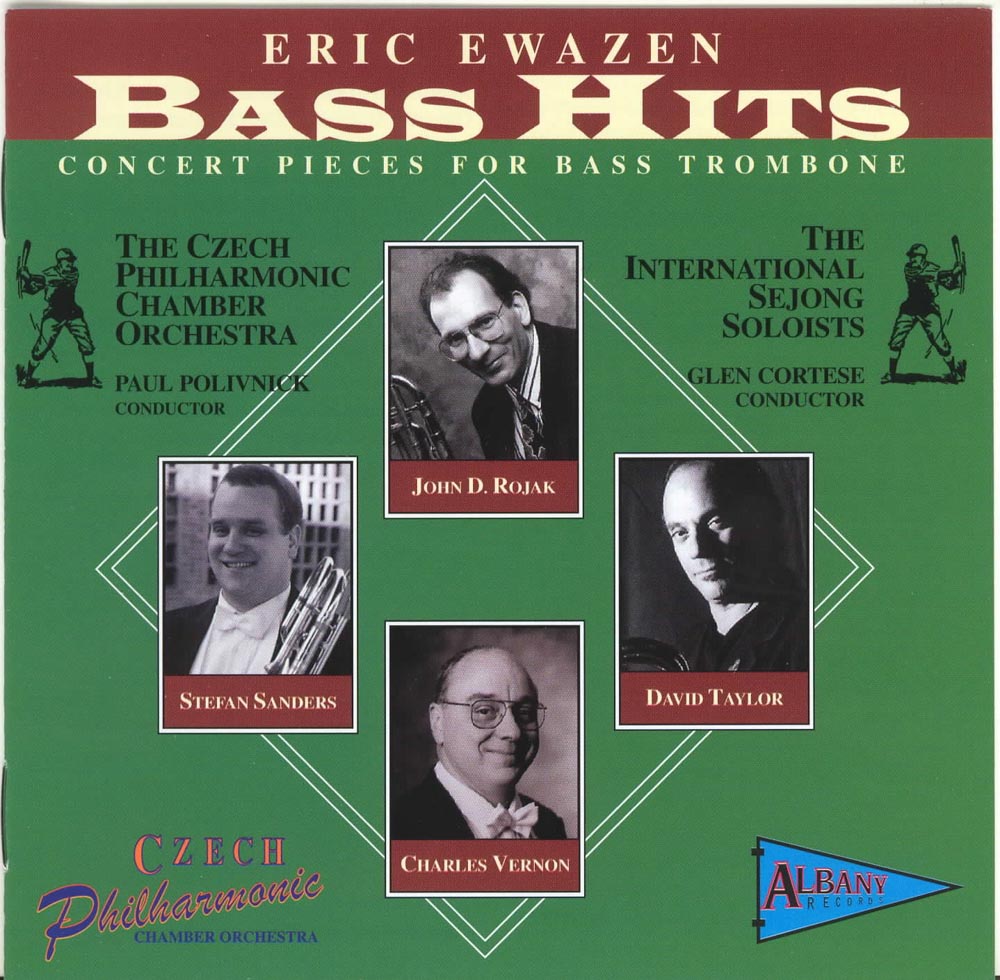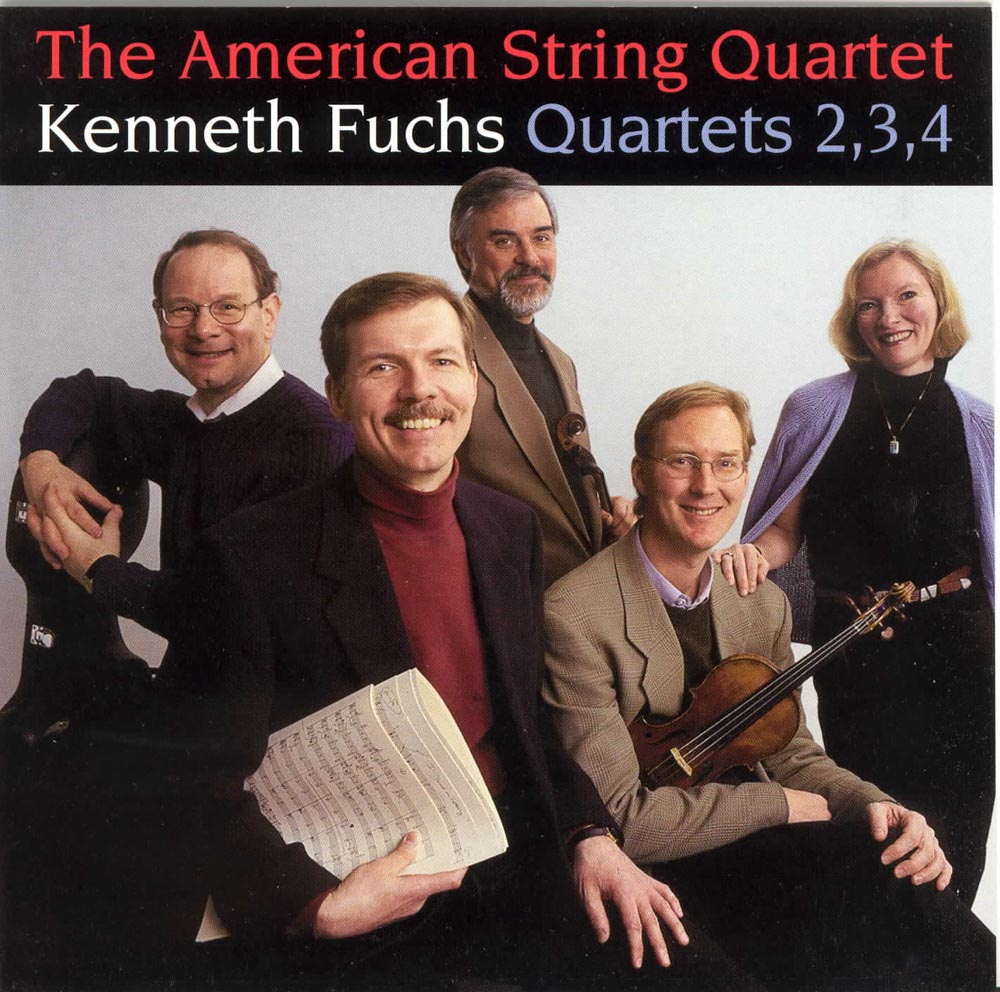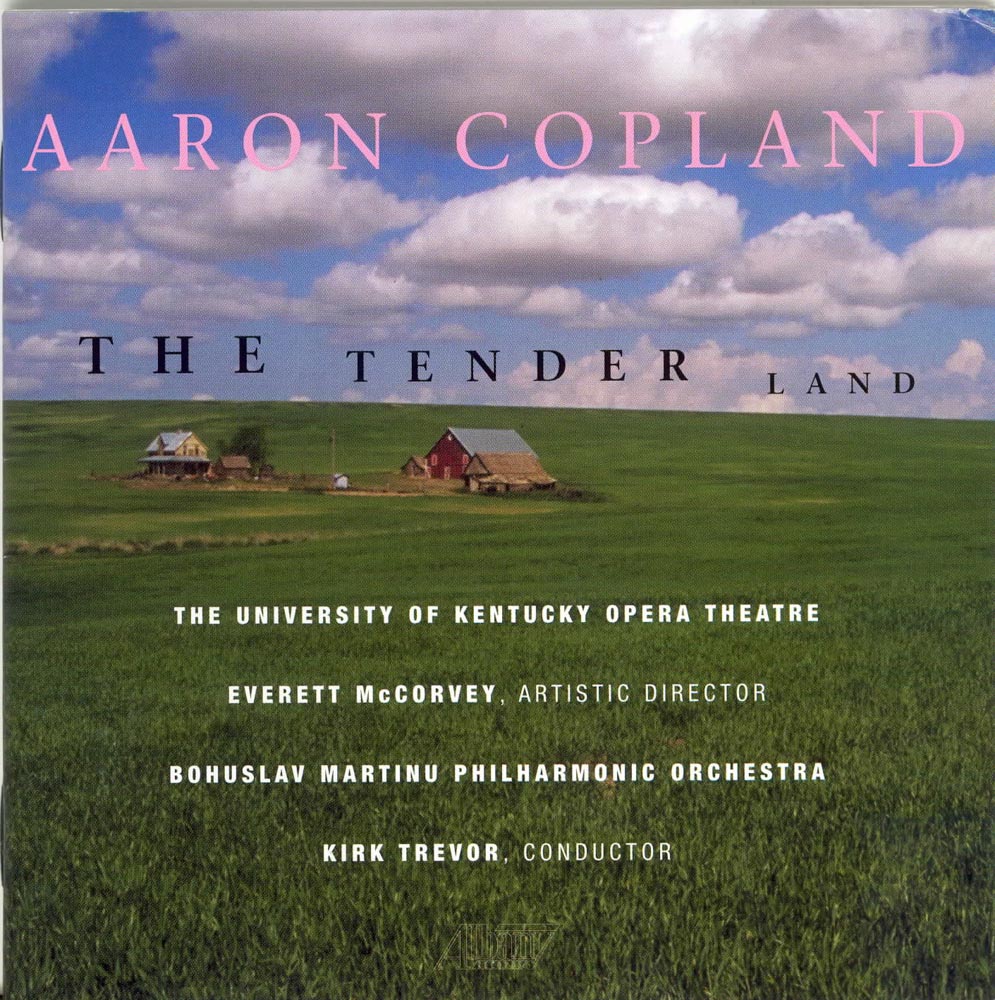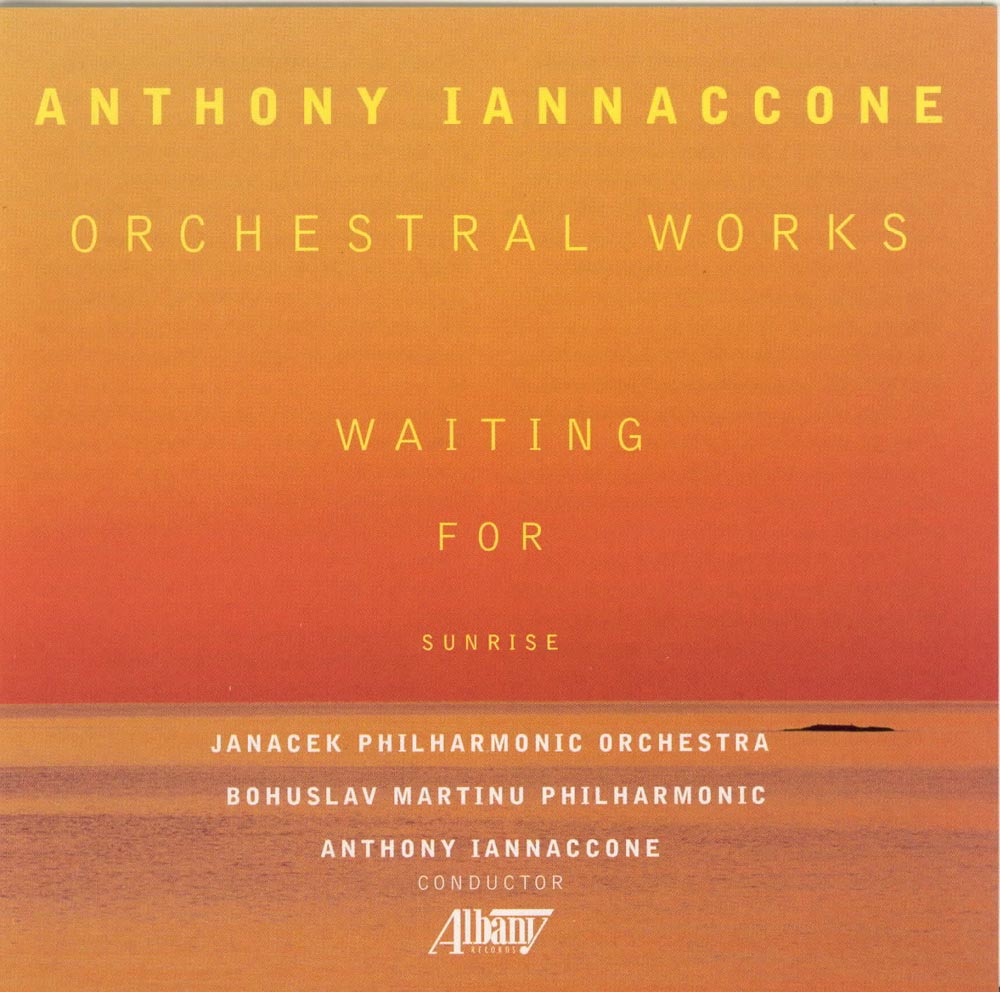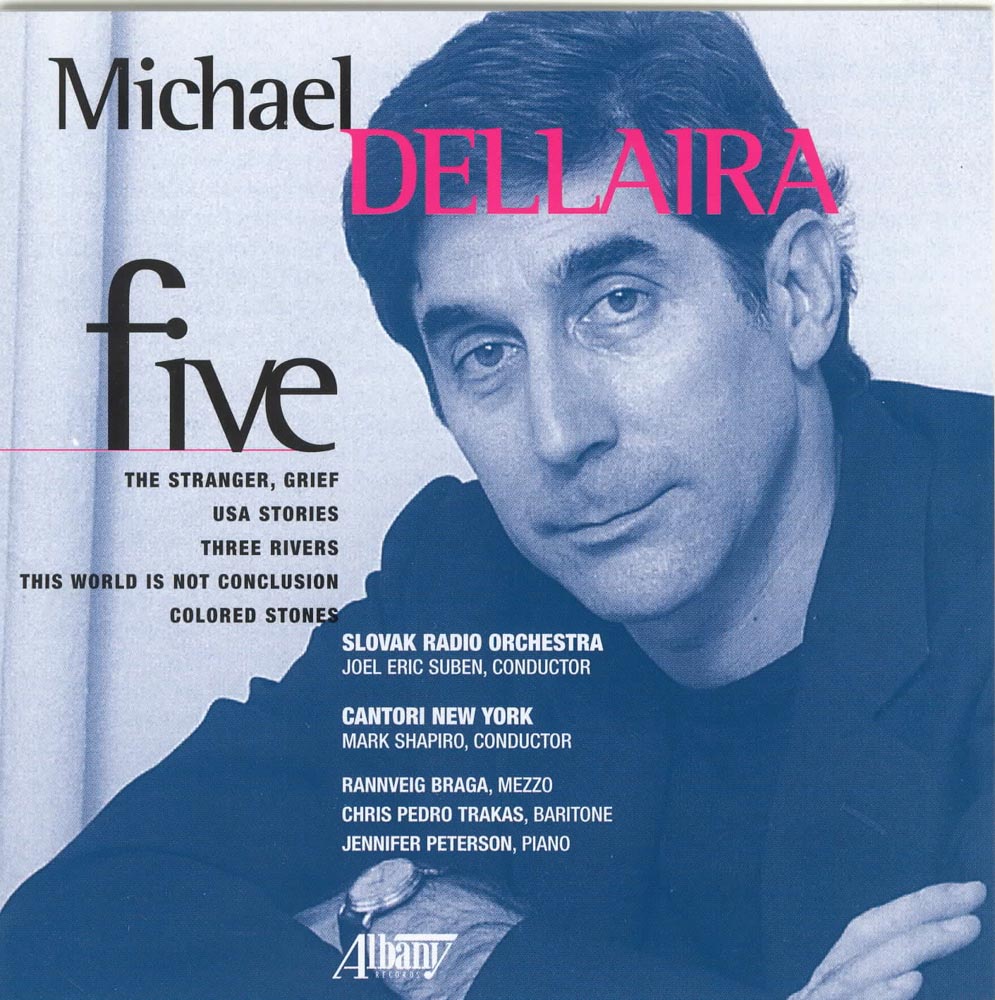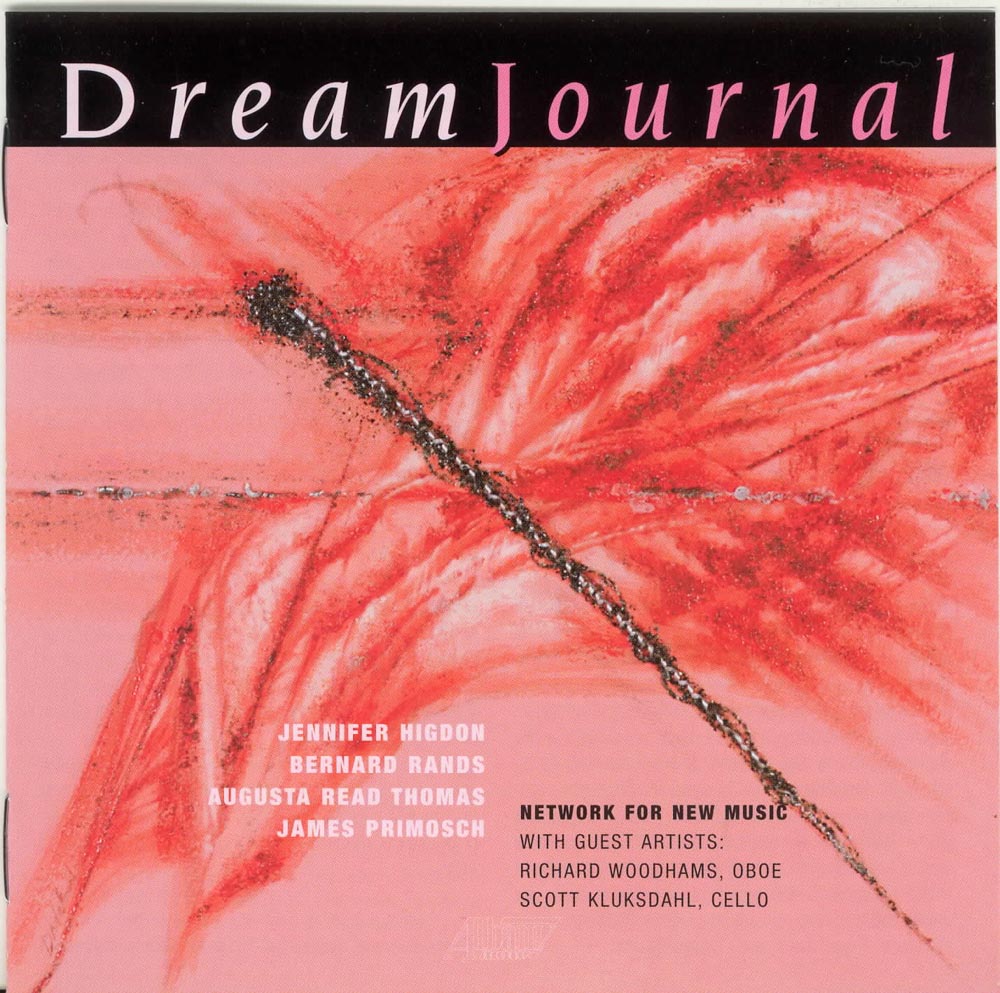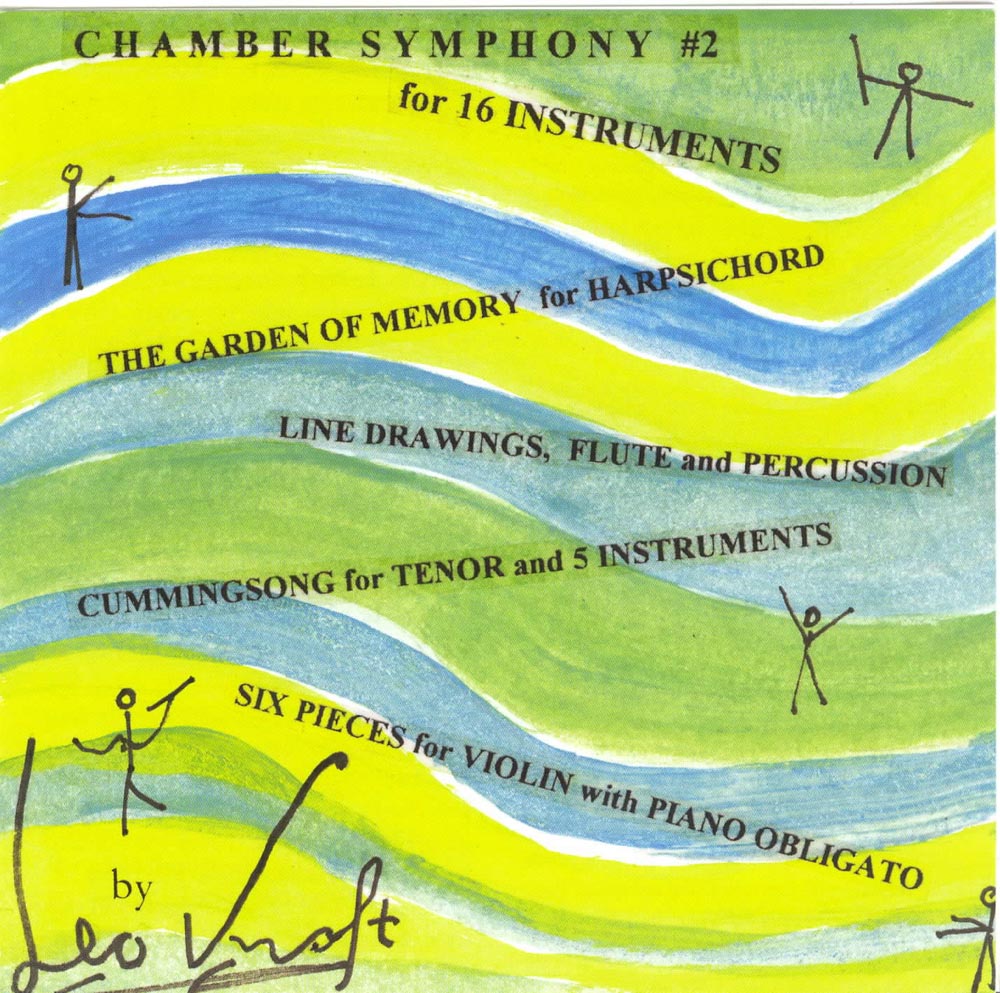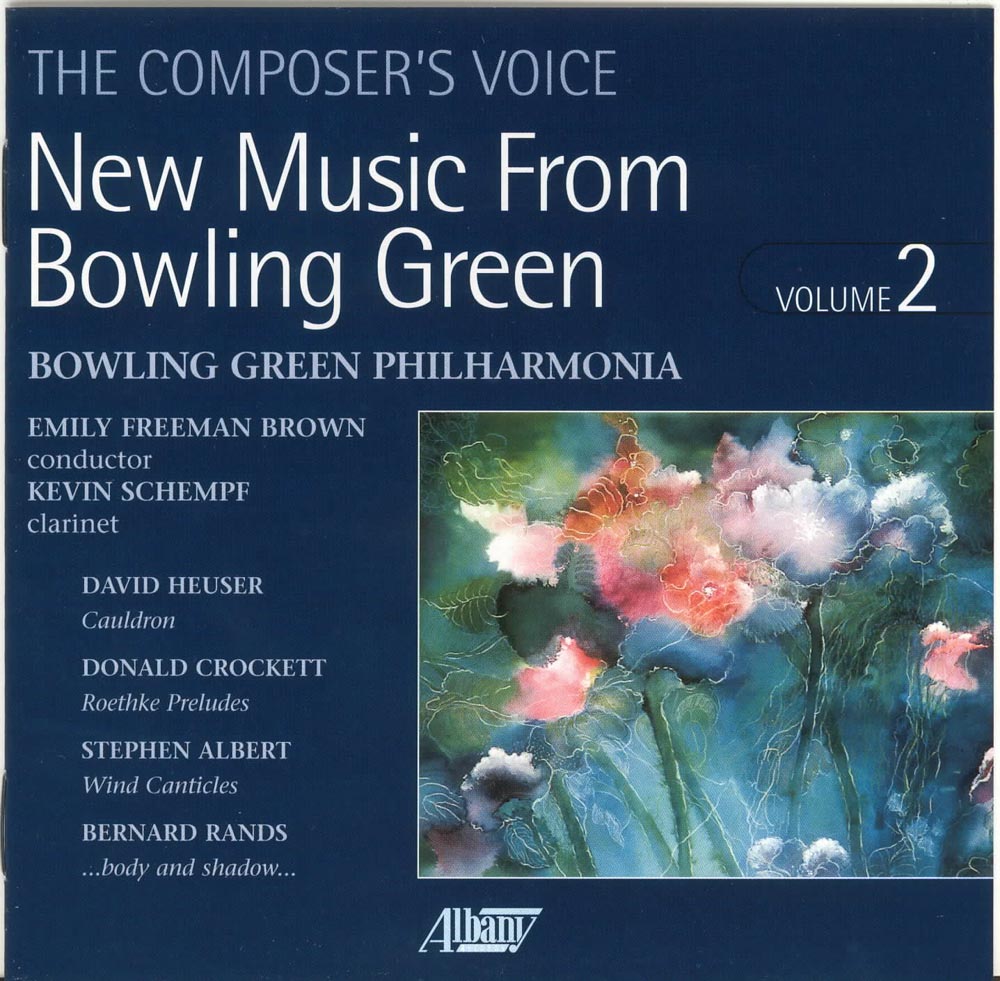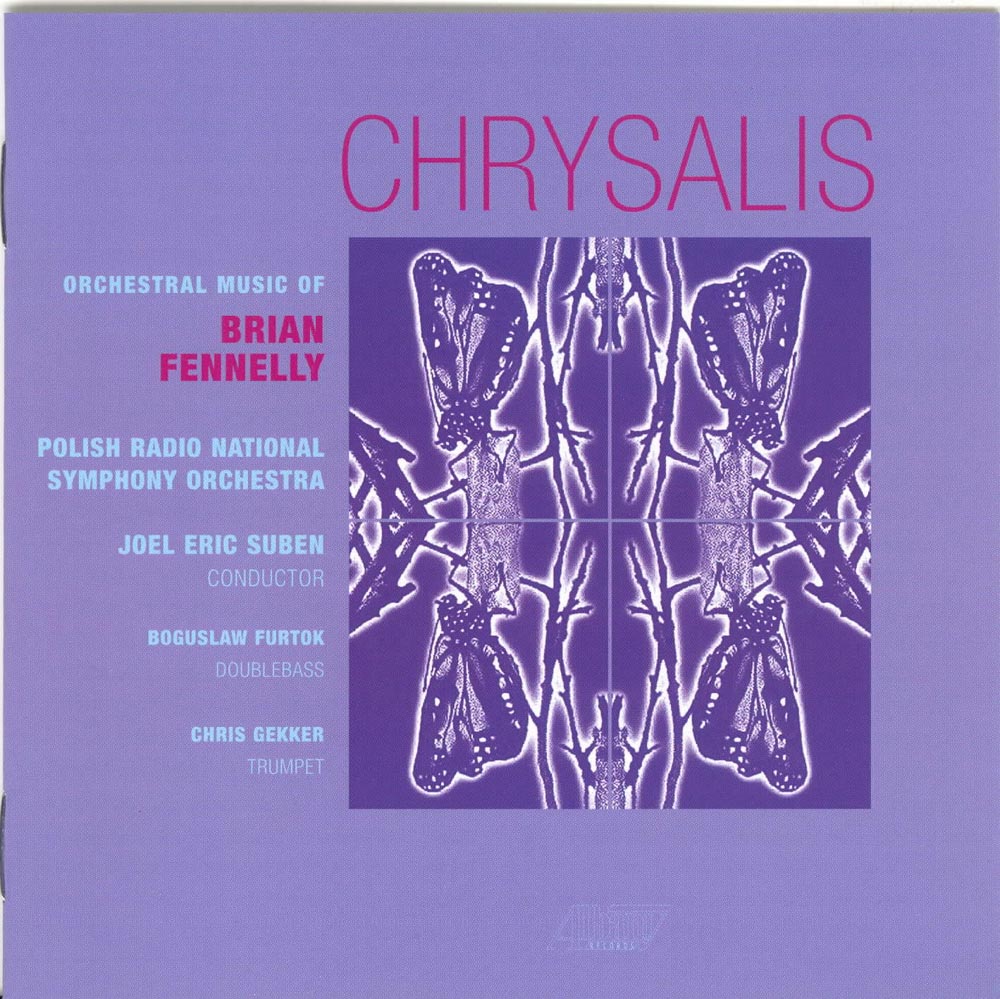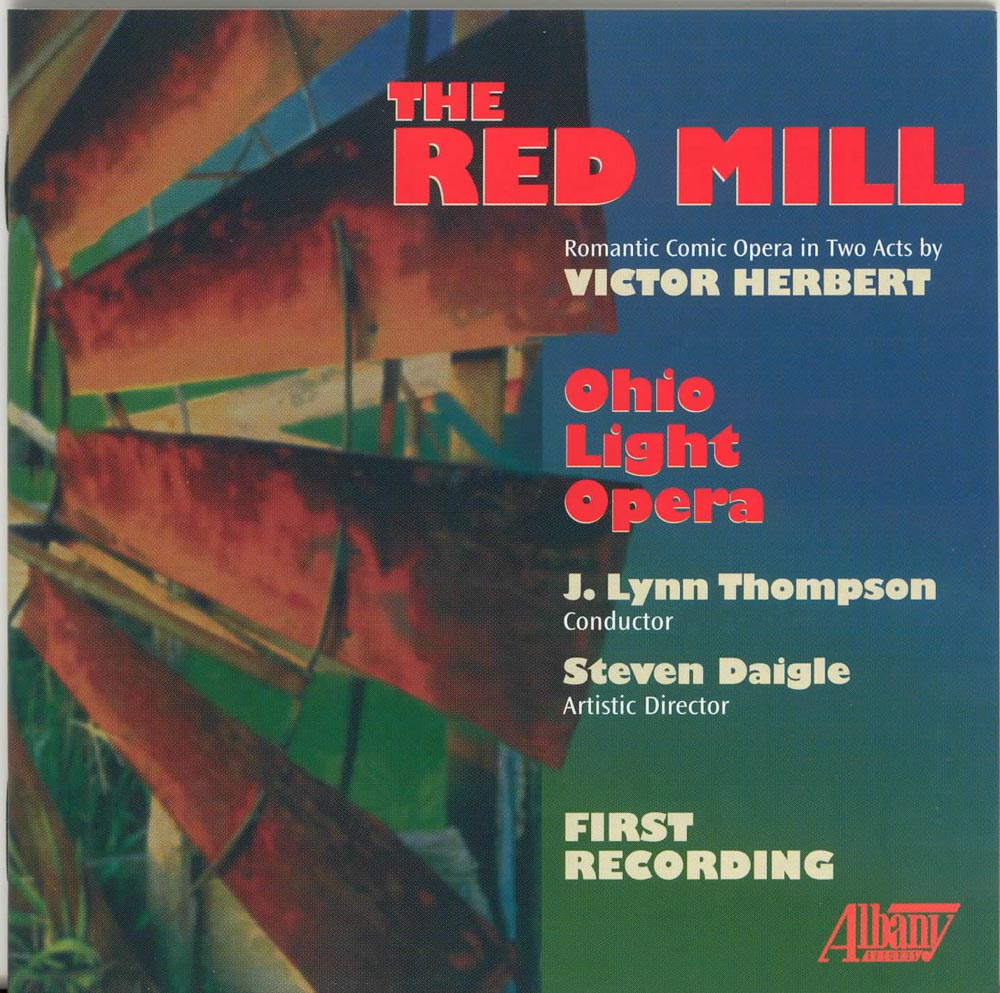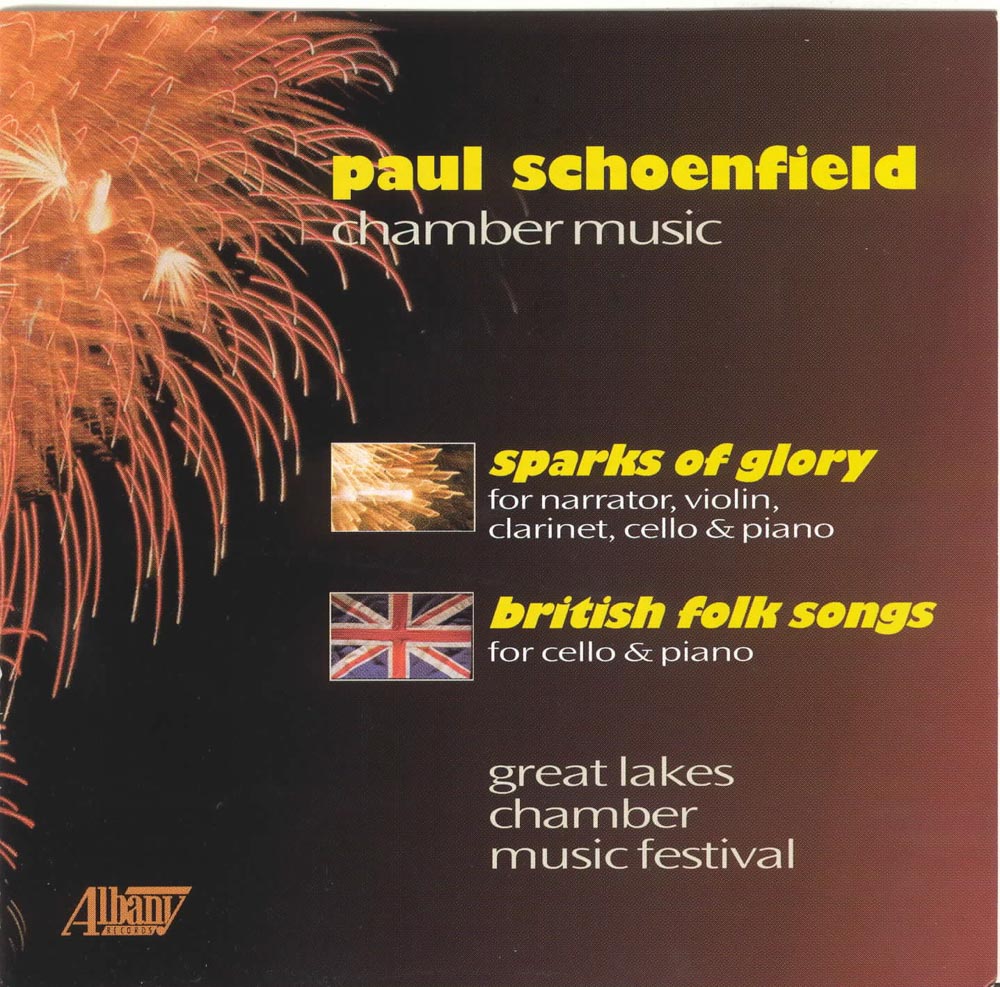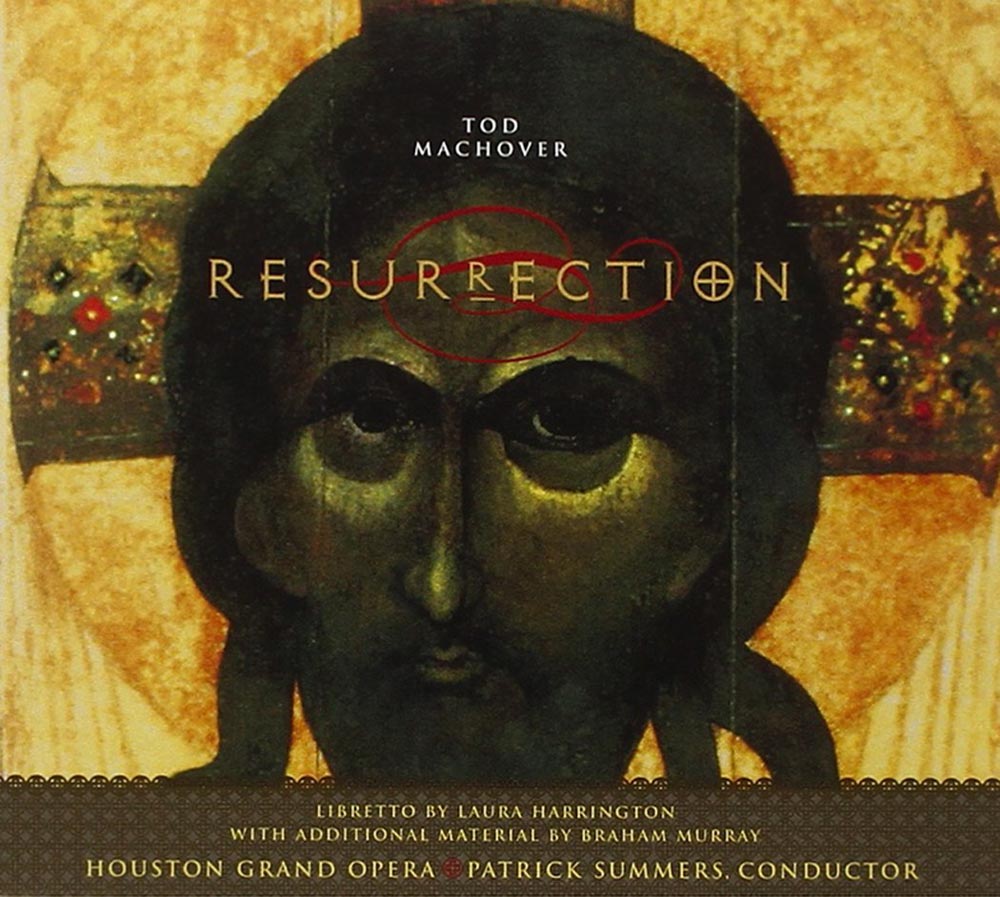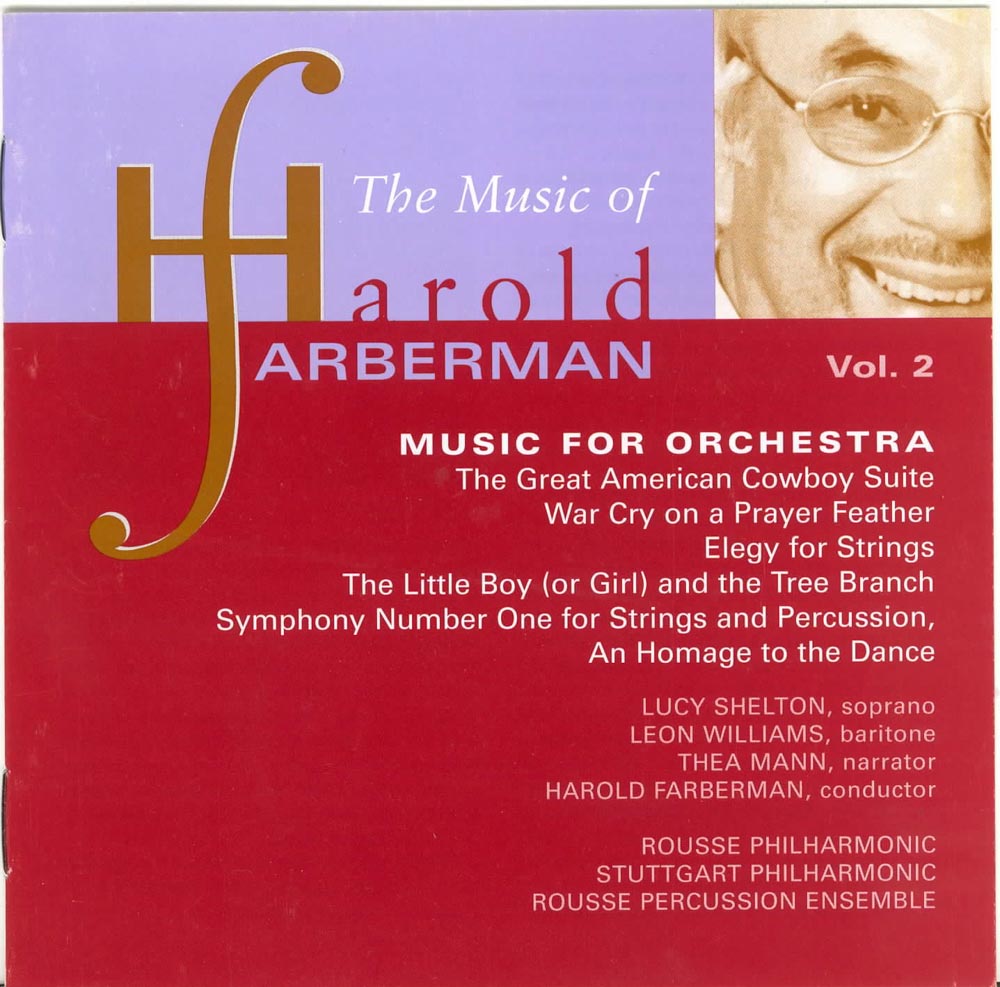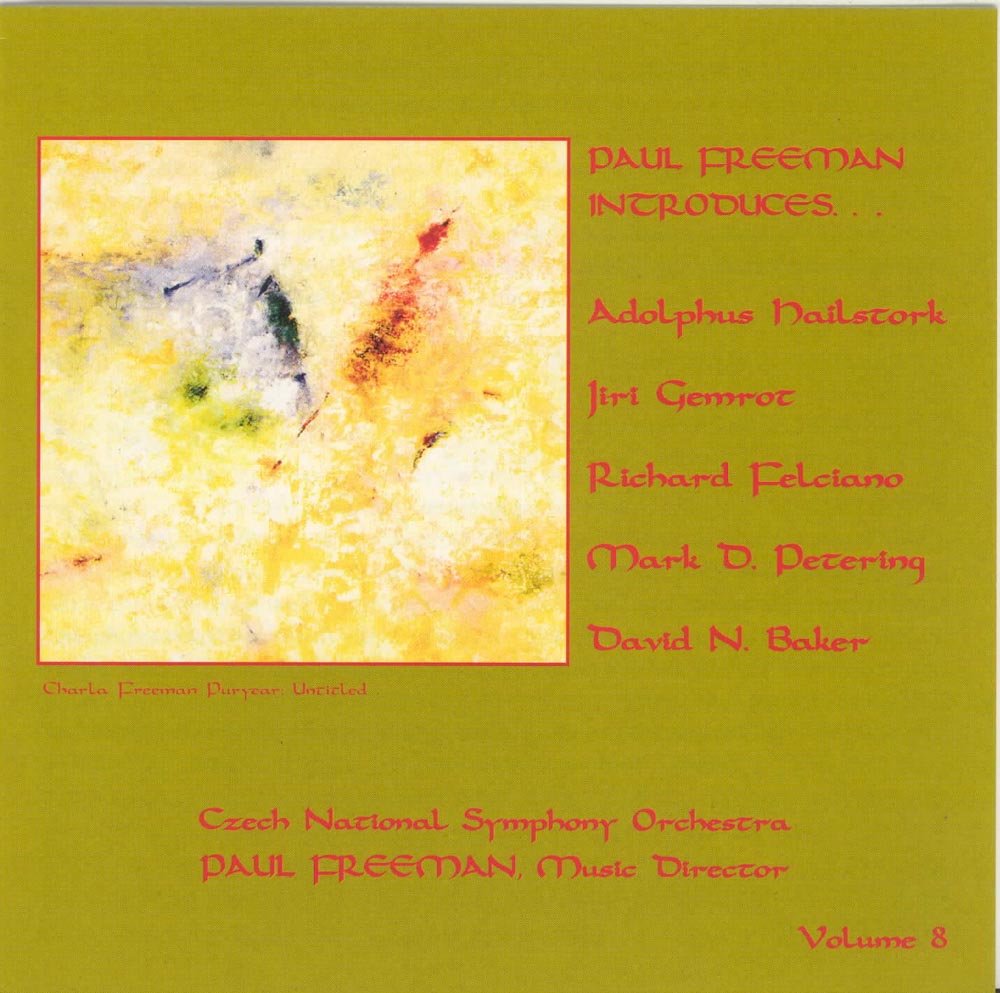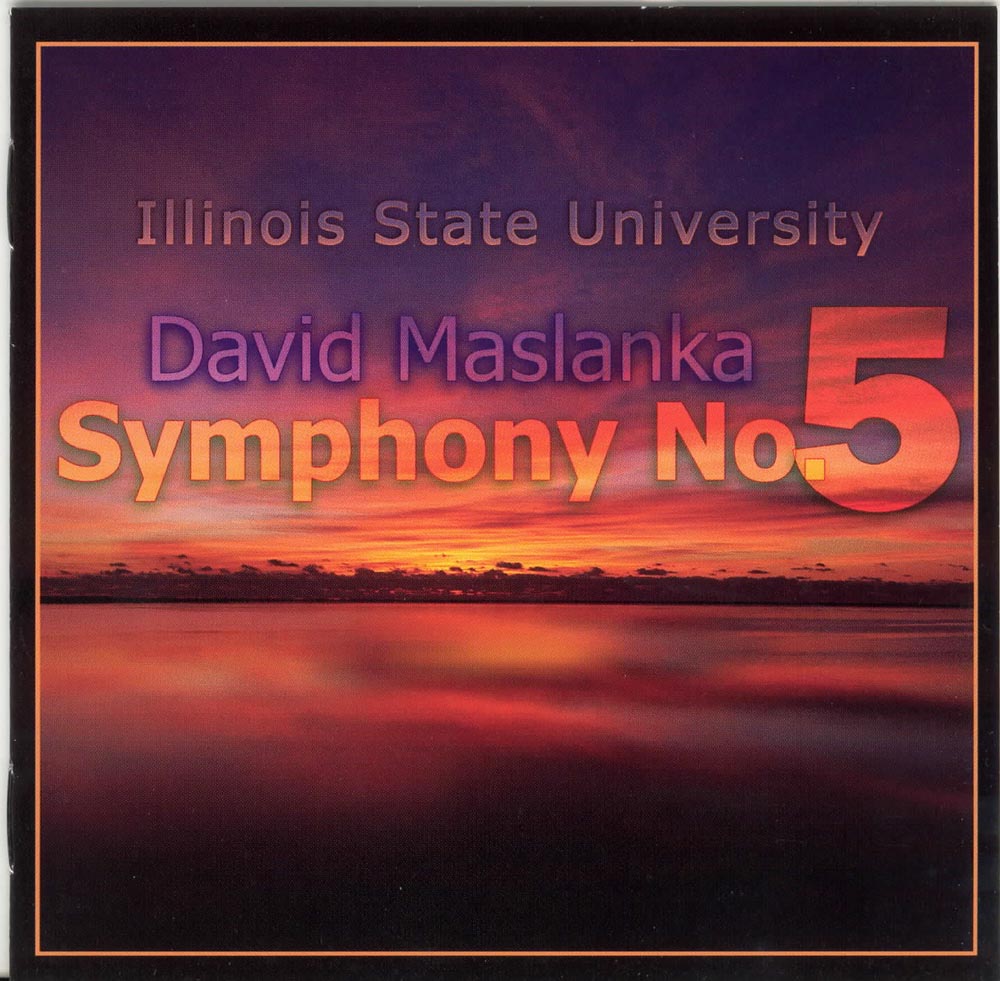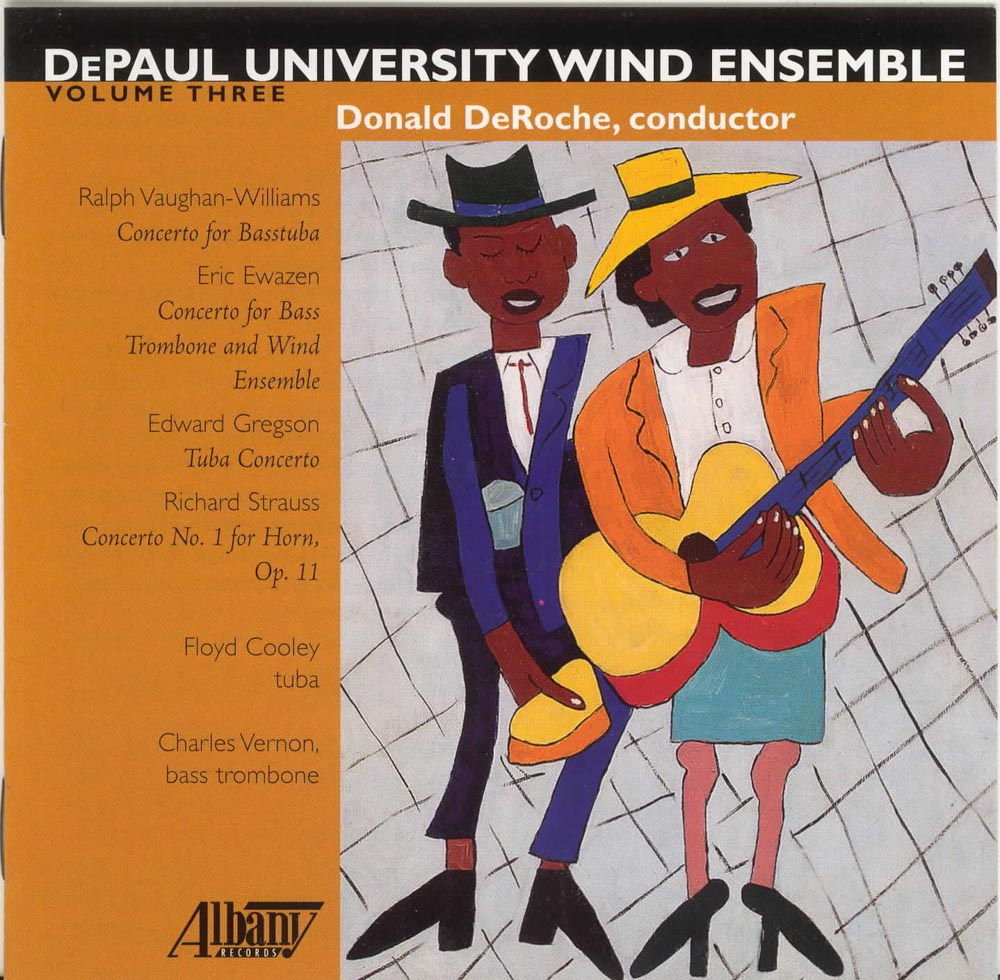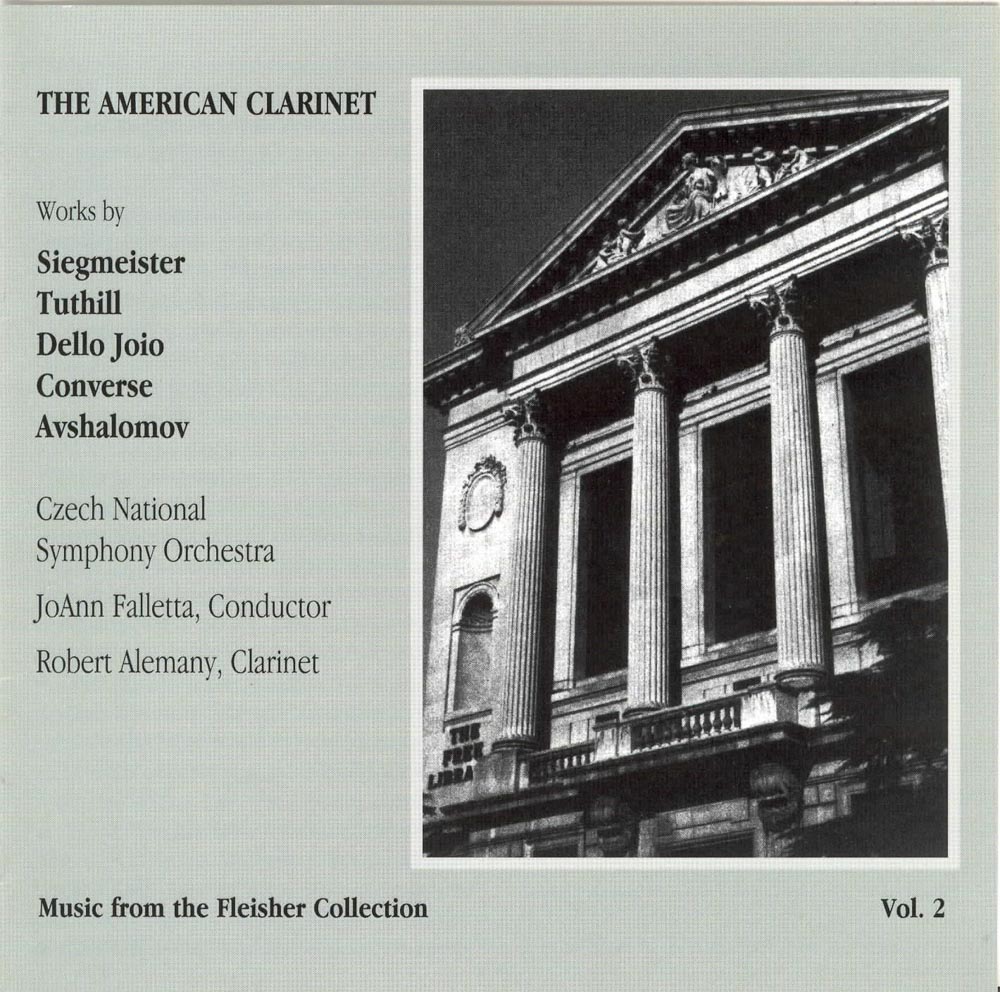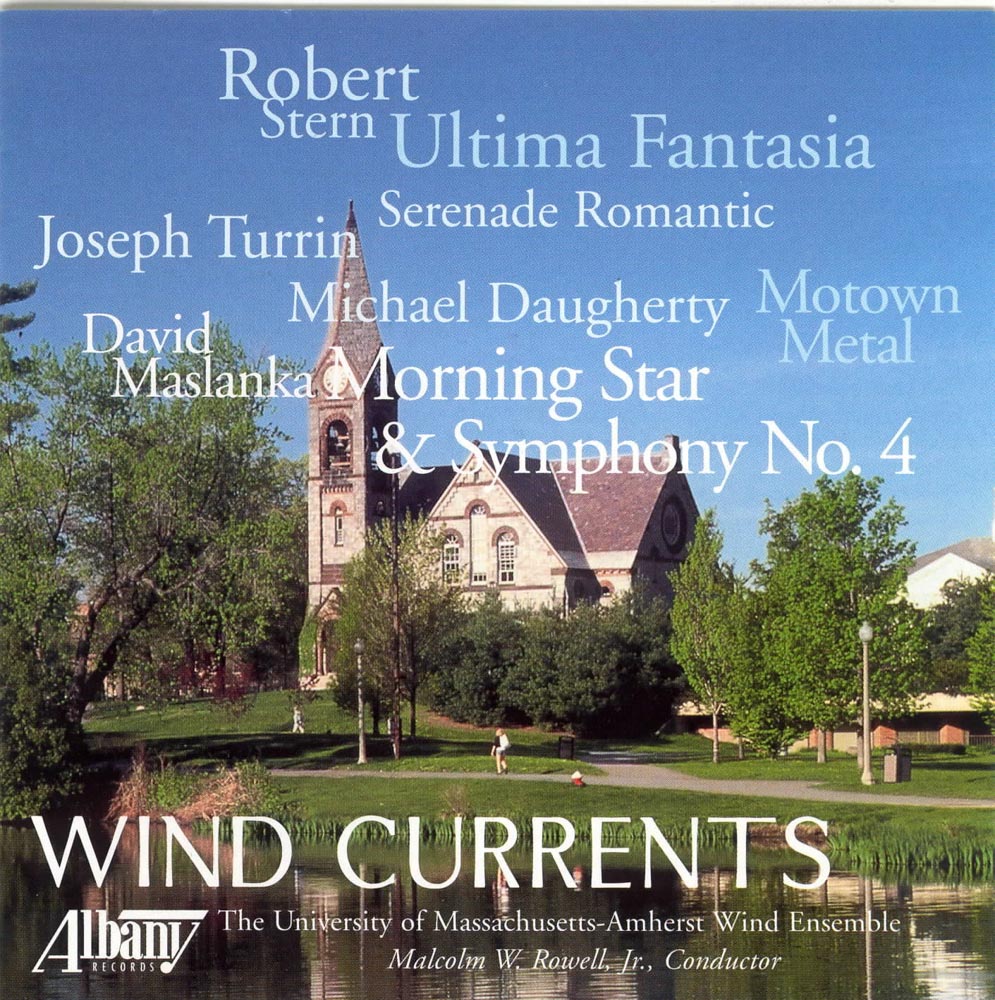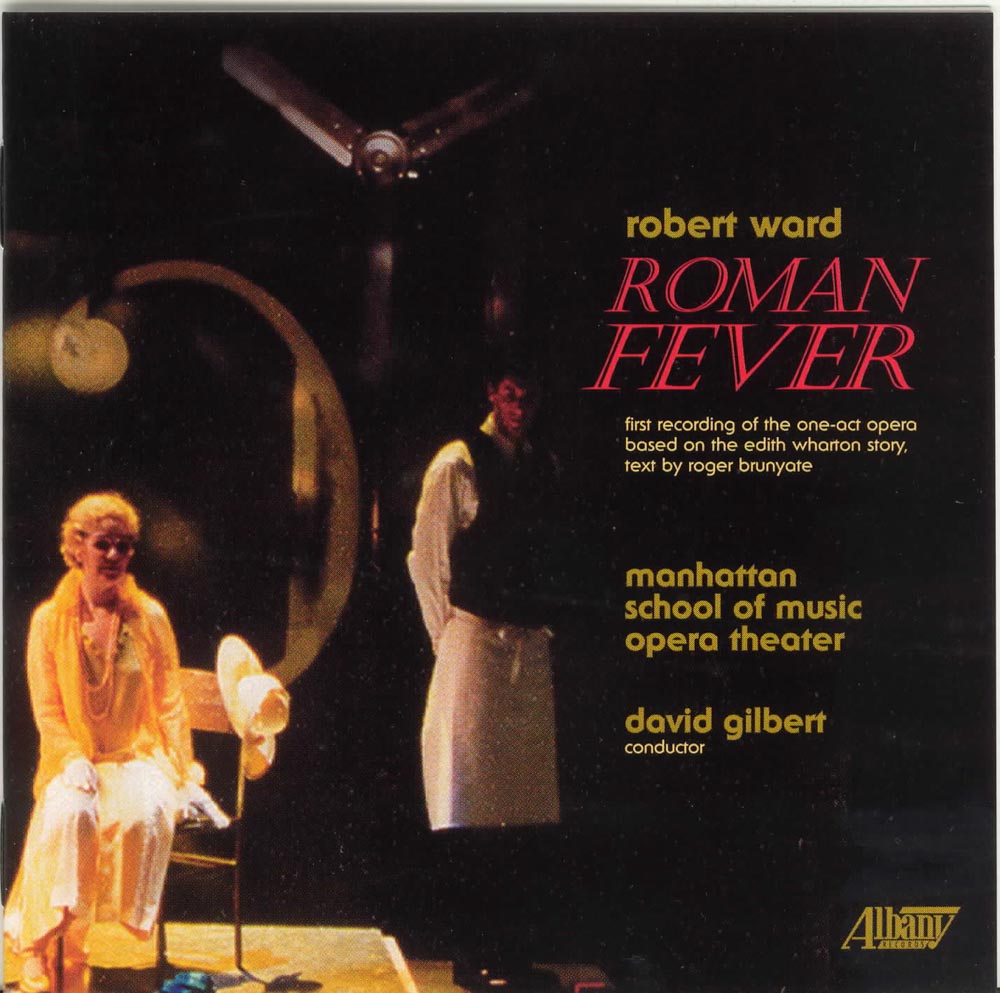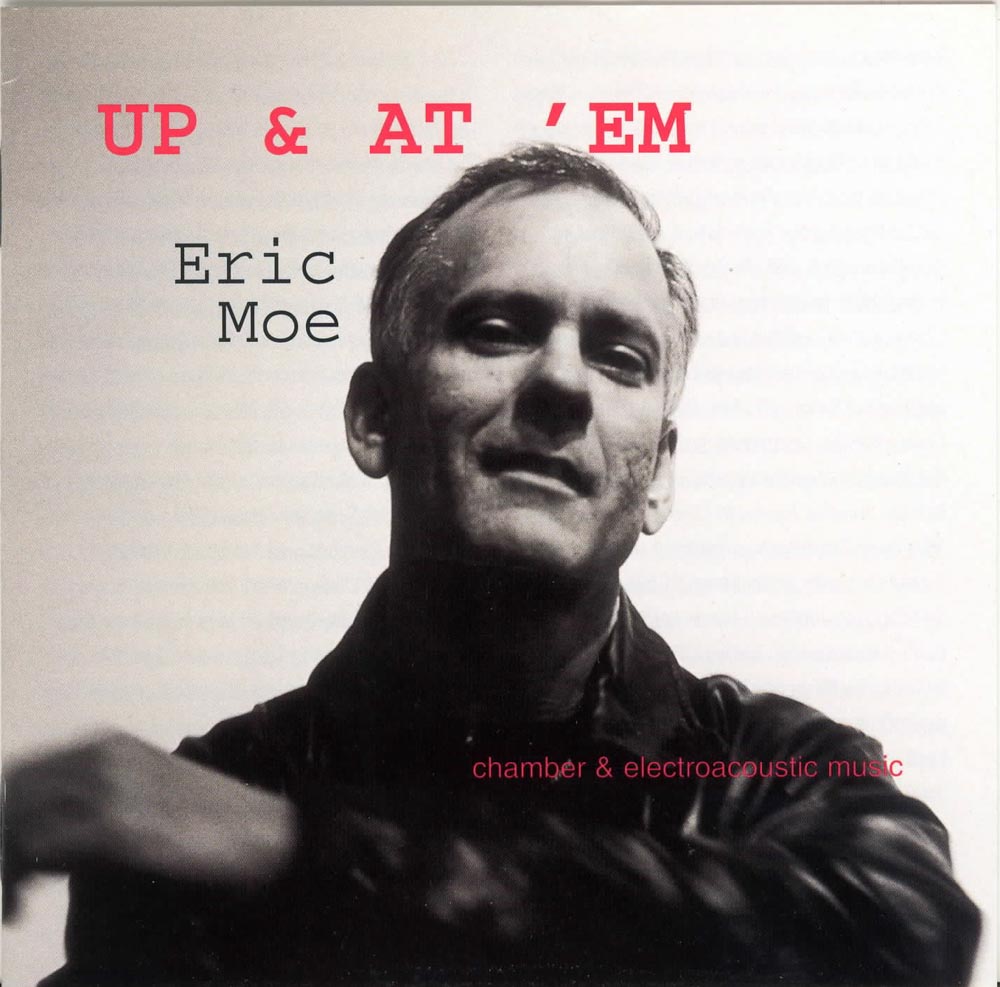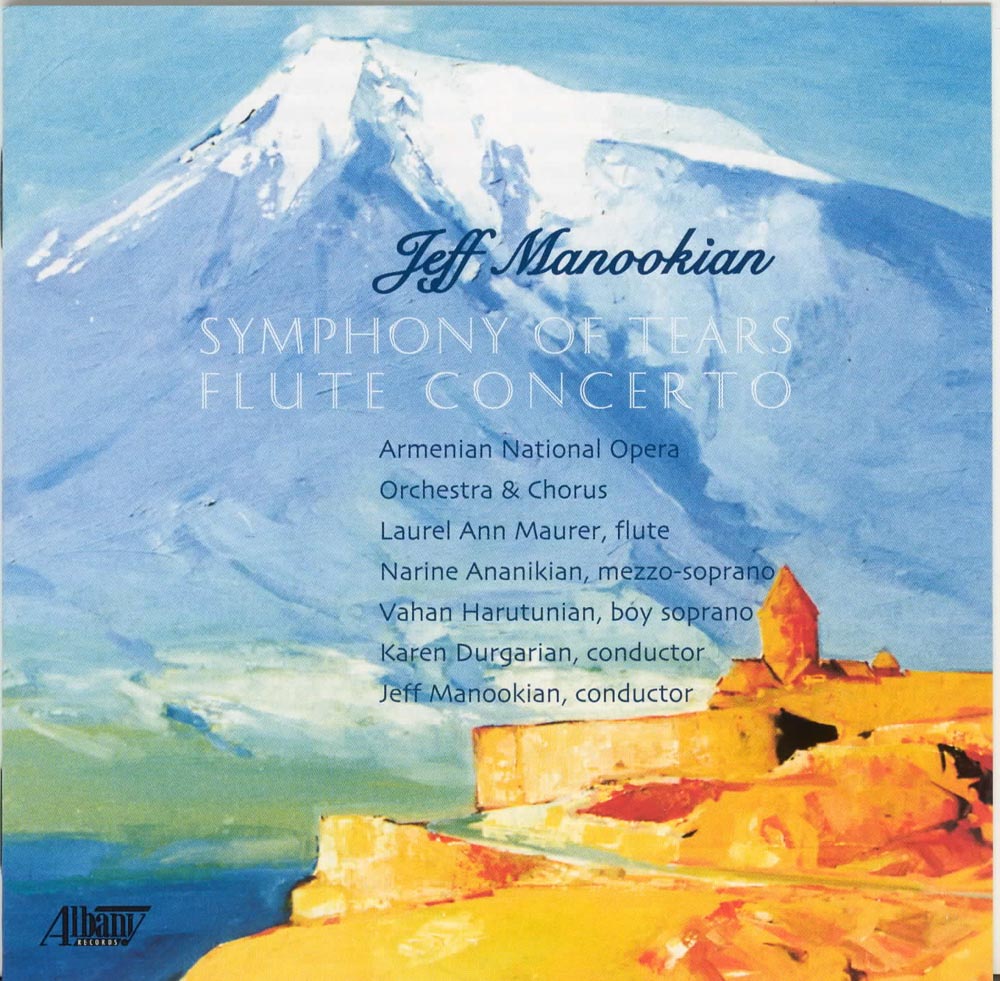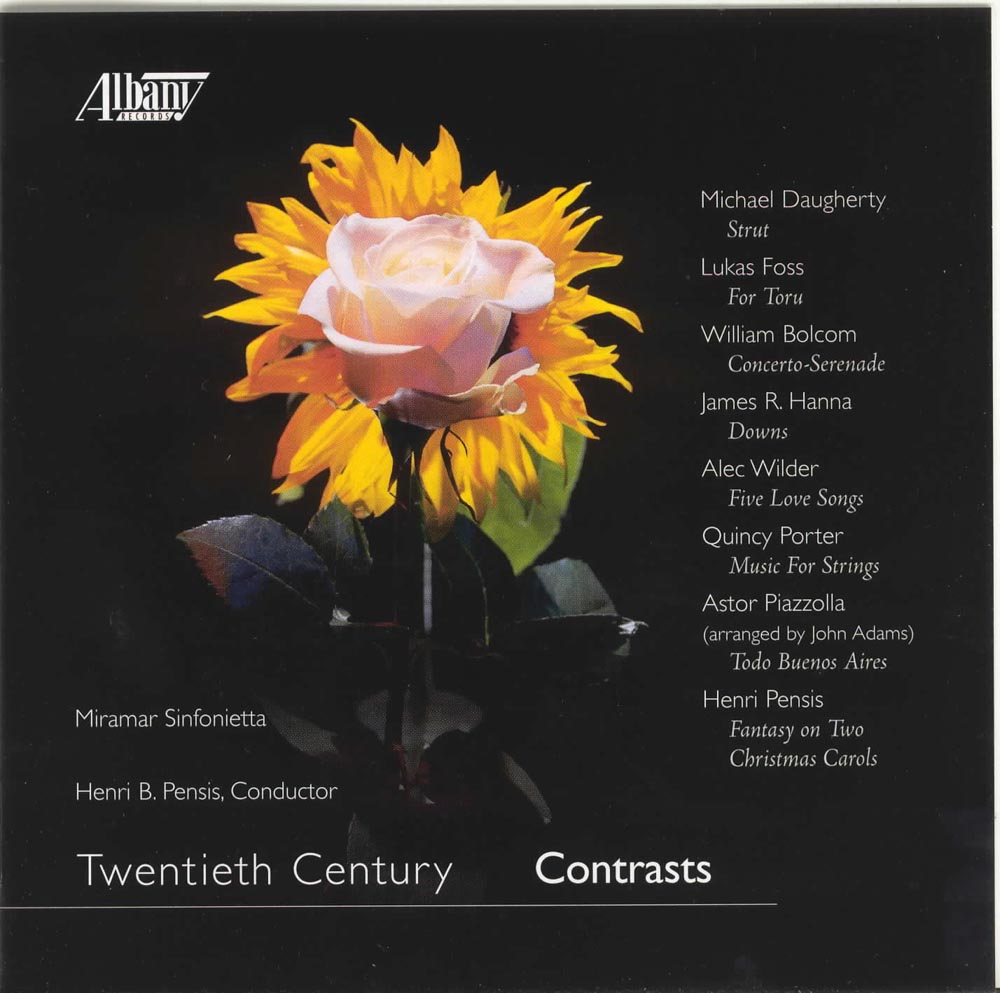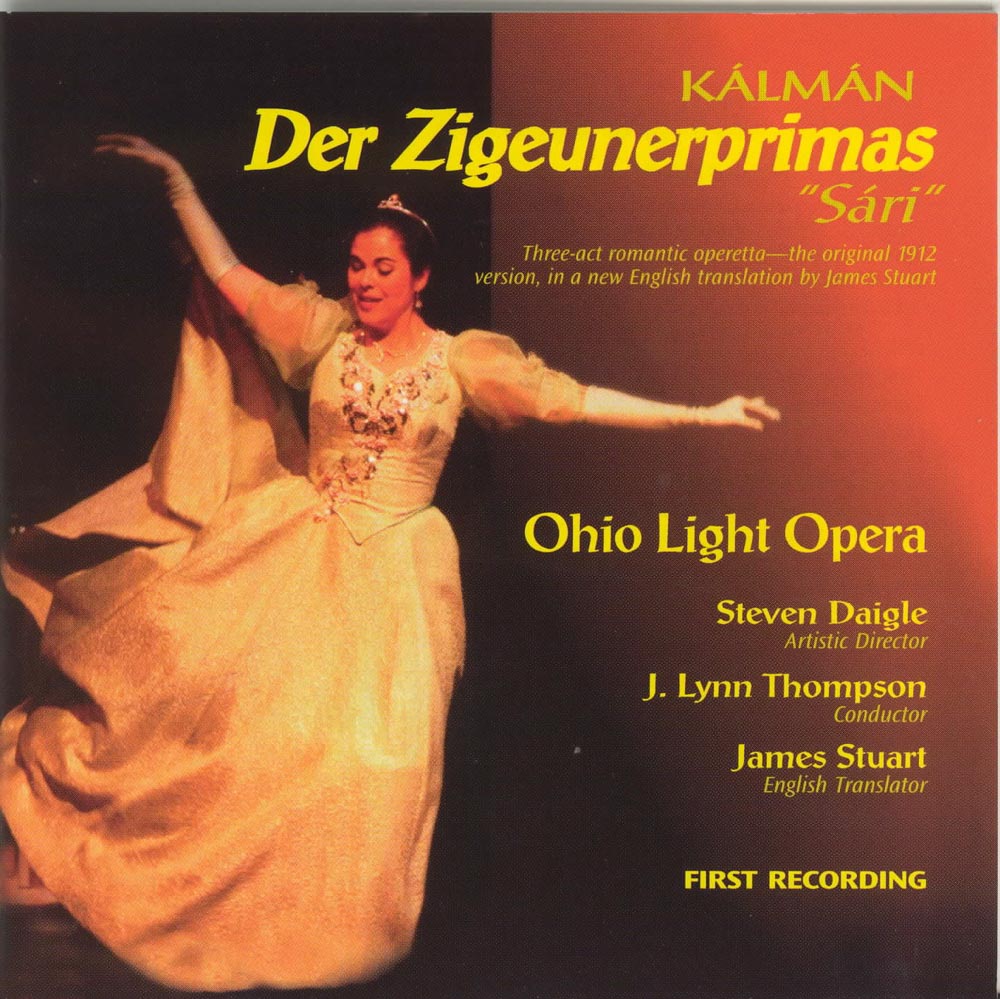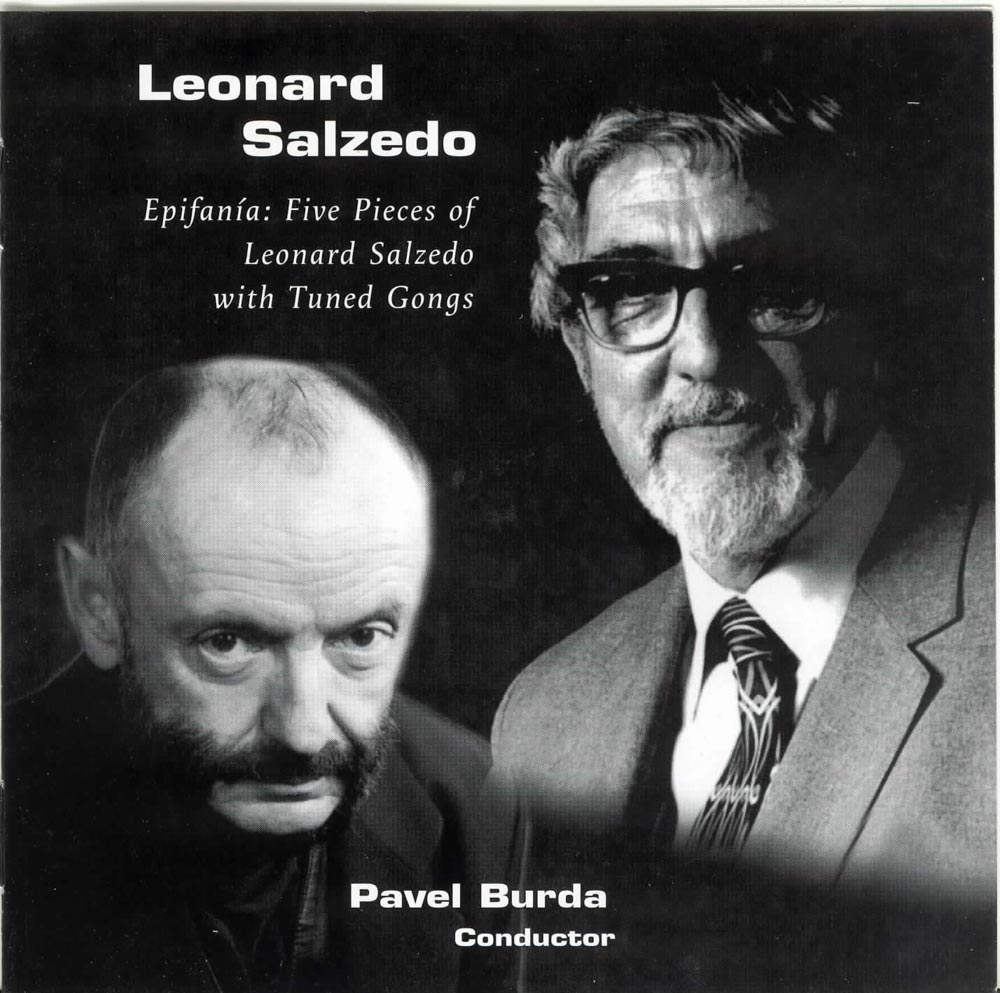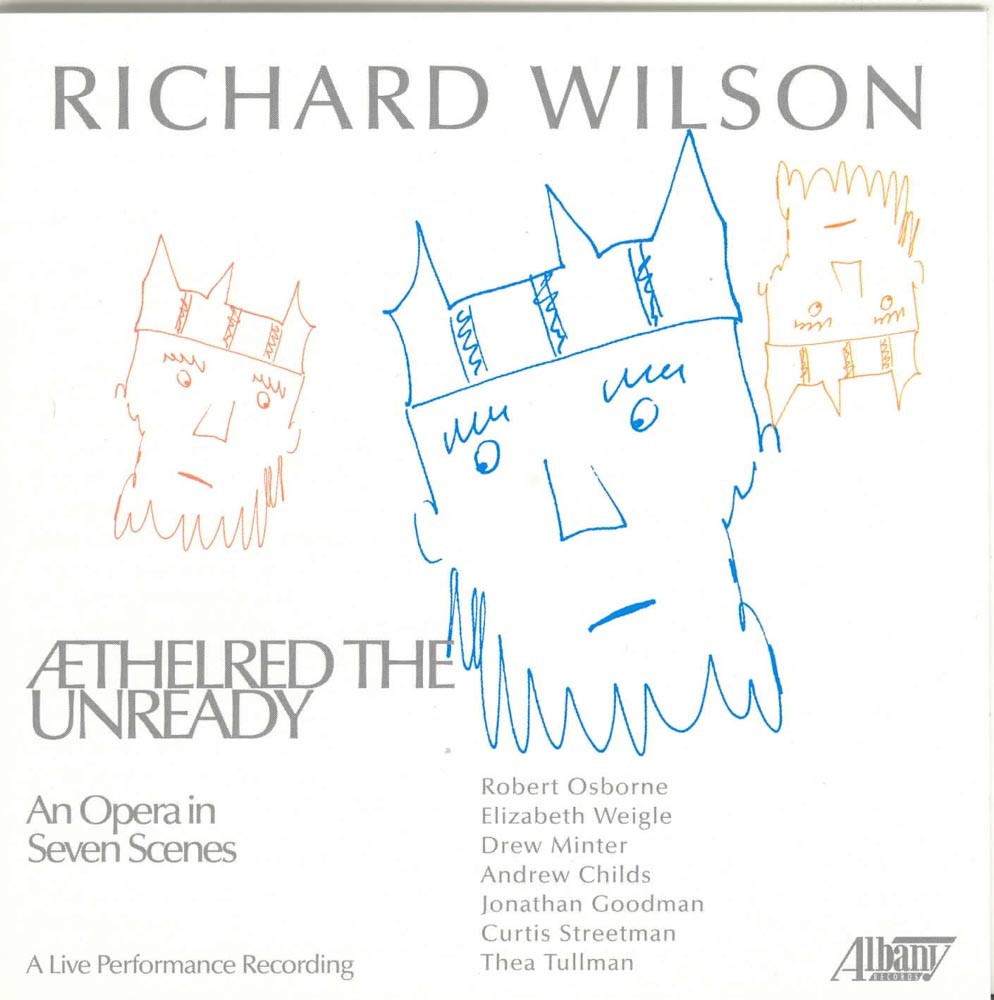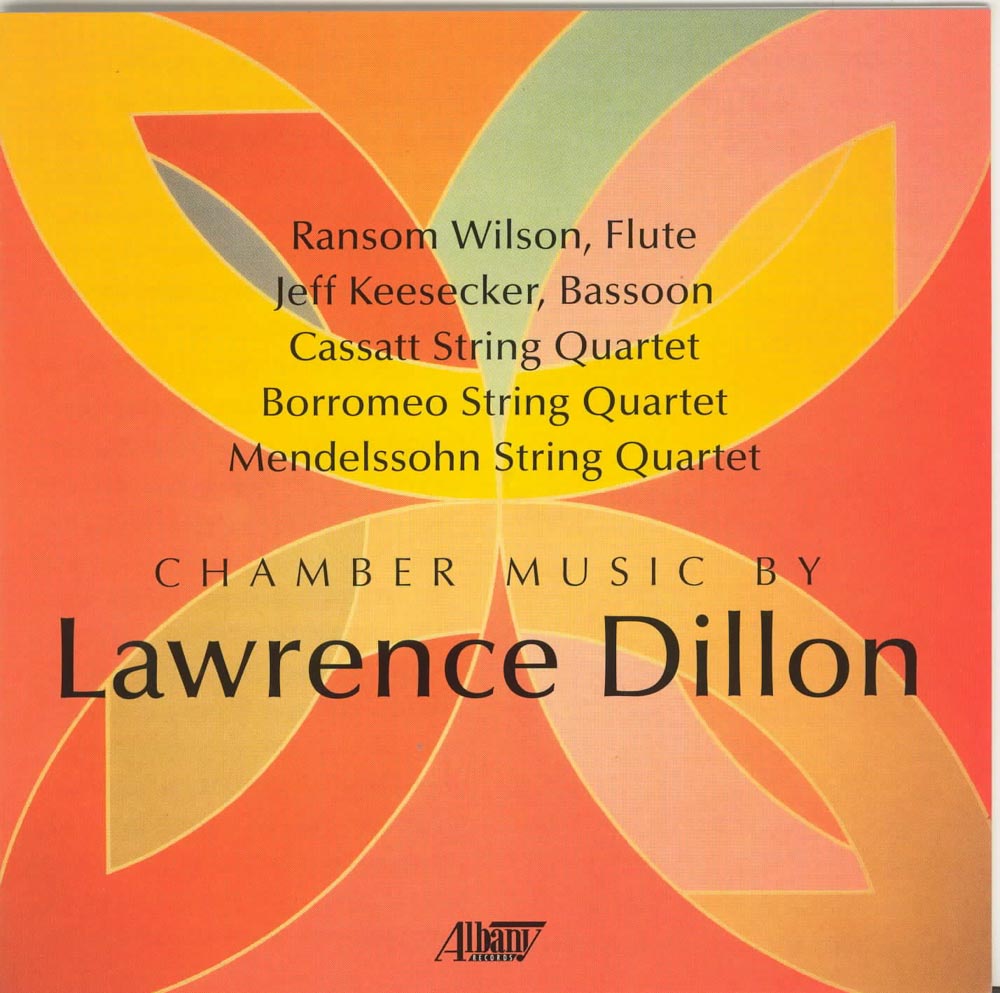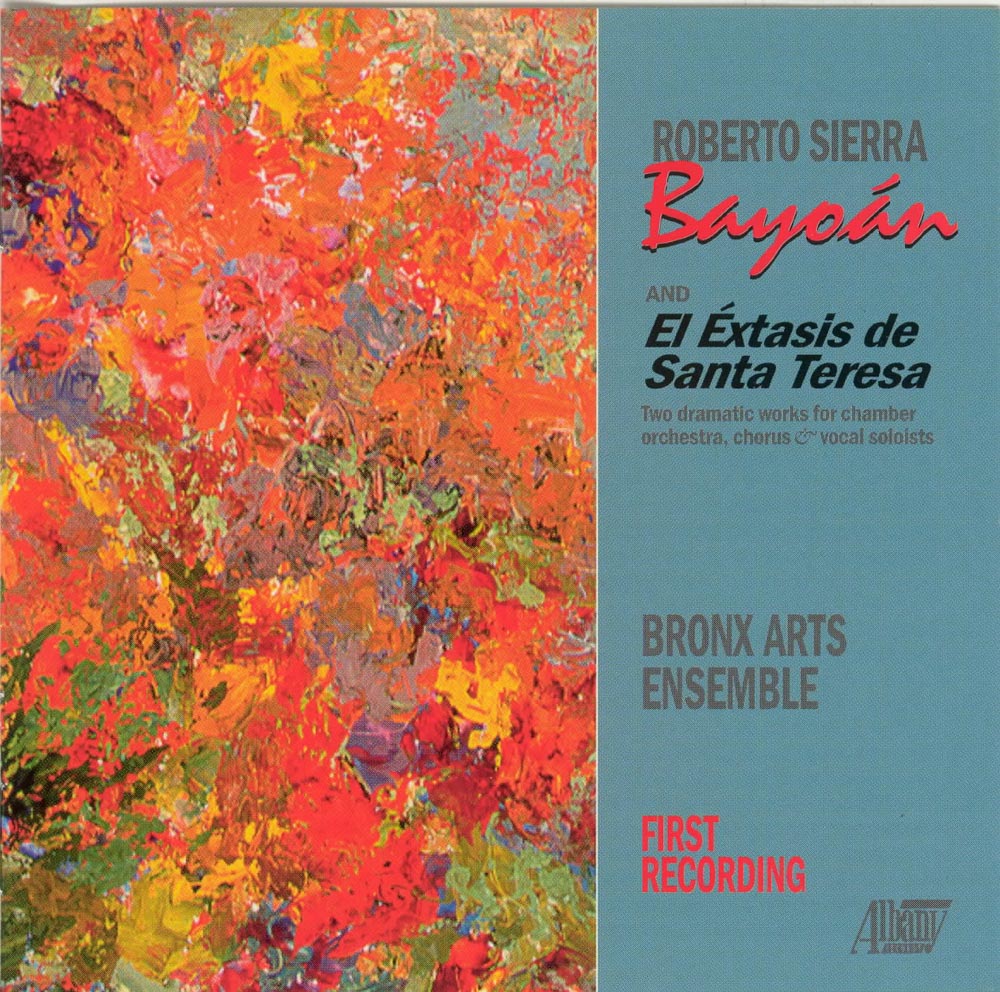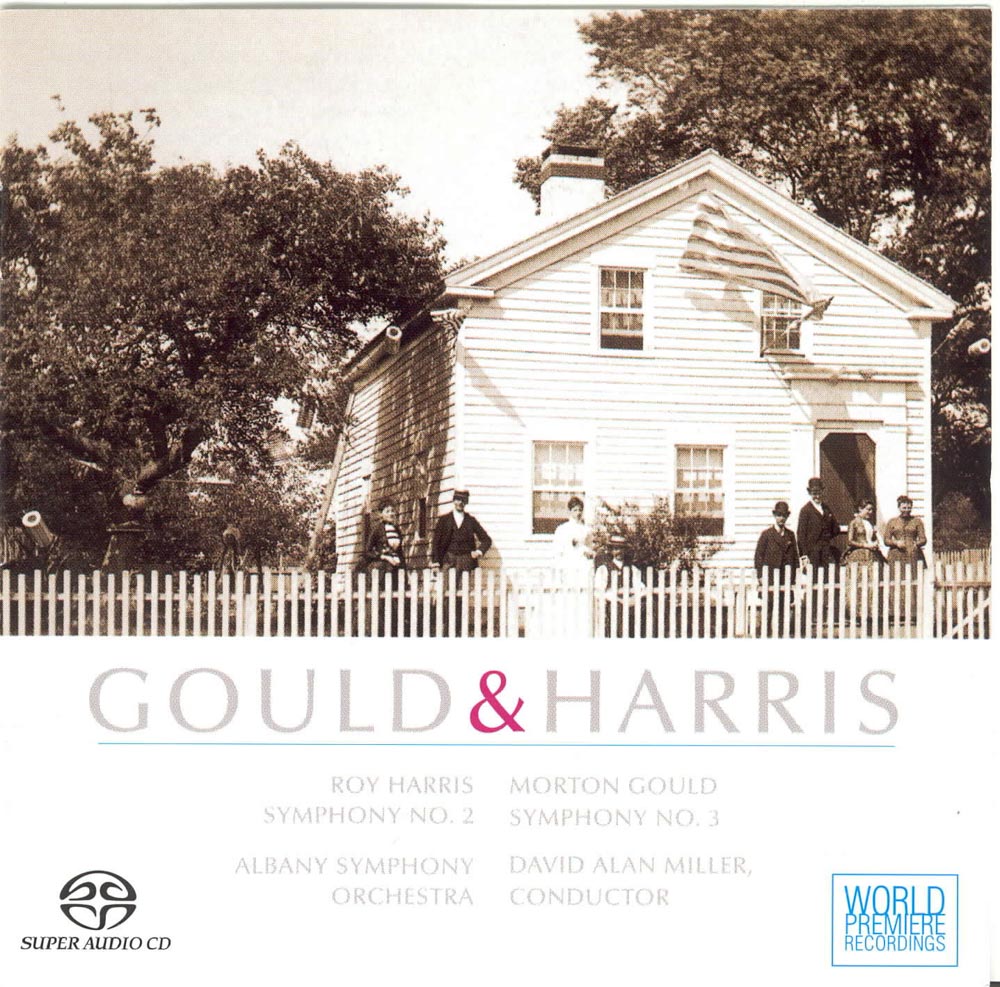Catalog #: TROY0477
Release Date: February 1, 2002OrchestralCurrently one of America's finest composers (and one of the most popular in the Albany Records catalog), Eric Ewazen is on the faculty of Juilliard. About the music on this CD, Ewazen writes: "In 1992, James Houlik came over to my Manhattan apartment to show me what he could do on the tenor saxophone. His spectacular playing caused unbelievable comment from my neighbors and I was hooked on his beautiful, intense tone. His abilities at playing the most exciting and virtuosic repertoire and his total command of all ranges and means of expression inspired me to write a work showcasing his amazing talents. My Ballade was composed for my friend Jean Kopperud in 1986, who presented the work at Merkin Hall in New York City. It was written while I was guest composer at the Tidewater Music Festival in Southern Maryland. Outside my guest cottage was the beautiful Chesapeake Bay. In the balmy summer weather, with the water gently lapping the shore, I wanted to describe this unbelievably pastoral scene with music. This was the birth of the Ballade. My Flute Concerto was written in 1988 for Julius Baker, the legendary flute player of the New York Philharmonic. He premiered the work in 1989 in Merkin Hall in New York City. My Chamber Symphony was composed in 1985 for the Fairfield Chamber Orchestra, conducted by Thomas Crawford, who commissioned the work. The wonderful pianist Margaret Mills, first played the prominent piano part (played by the composer on this CD). The piano takes the role of the harpsichord in Baroque orchestral music."
Catalog #: TROY0478
Release Date: September 1, 2001ChoralArmenian composer Sirvart Kalpakian Karamanuk was born in Istanbul in 1912. She studied at the Istanbul Municipal Conservatory, graduating in 1939. Her first compositions, written in the 1940s, were for the piano. She gradually broadened her musical interests, composing numerous art songs, choral works, large-scale compositions for chorus and orchestra as well as chamber works and arrangements of liturgical chants. Like many composers of the Armenian diaspora, Karamanuk's creative concerns focus on maintaining a link with Armenian church music and folk song and absorbing the classical traditions of Armenian culture. In molding her own musical language, Karamanuk borrows from Armenian oral tradition. This recording of her songs includes a cantata and was the first large-scale setting of poems by Armenian poet Bedros Turian.
Catalog #: TROY0479
Release Date: December 1, 2001ChamberEric Ewazen was born in Cleveland, Ohio. He studied at Eastman and the Juilliard School. He has been vice-president of the League-ISCM, Composer-in-Residence with the St. Luke's Chamber Ensemble, lecturer for the New York Philharmonic's Musical Encounters Series, and is currently a faculty member of The Juilliard School. Eric Ewazen writes: "With its versatility, impressive range and amazing colors, the bass trombone is an instrument capable of such a variety of emotional expression. Having been a friend of David Taylor since 1980, I have long known of his legendary playing in so many different musical styles - from classical to jazz to popular to experimental. With my Concertino, I wanted to write a work for him which captures many of his musical personalities. The piece was premiered in 1996. Ballade for Bass Trombone, Harp and String Orchestra began life as a work for clarinet. I made the arrangements for Charles Vernon, to whom the piece was dedicated in 1996. Stefan Sanders, whom I am proud to count as one of my music theory students at Juilliard, won the low brass competition held at the school in 1997, resulting in his premiere performance of my Concerto for Bass Trombone (or tuba) and Orchestra. Stefan's commanding sonority and his heartfelt expression resulted in a premiere performance both riveting and soulful. John Rojak has been a friend for almost 25 years, since we were students together at Juilliard. As the extraordinary bass trombonist of the American Brass Quintet, he has performed on some of the most celebrated brass chamber music recordings of the 20th, now 21st century. Equally adept as a terrific soloist, John approached me about writing a piece for him in 1996. This resulted in the Rhapsody for Bass Trombone and String Orchestra which he premiered in 1997. The final work on this CD, the Capriccio for Bass Trombone and Trombone Choir was written for David Taylor as a companion piece for his Concertino which opens the CD."
Catalog #: TROY0480
Release Date: October 1, 2001ChamberRichard Danielpour writes: "I met Kenneth Fuchs some 20 years ago at the Juilliard School when we were being interviewed for the master's program by an auspicious panel of composers: Milton Babbitt, Elliott Carter, David Diamond, Vincent Persichetti and Roger Sessions. I was impressed by my initial conversation with him and happy that we each had been accepted into the program. I remember his very first string quartet as one of the few works of substance that I heard by a fellow composer during my six years there. Many years later we found ourselves at another school - the Manhattan School of Music. This time Ken was Dean of Students, as I took my place on the composition faculty. This happy confluence of appointments gave me the opportunity again to become acquainted with his music. The fourth quartet displays a formidable sense of craft and imagination with the utmost economy. It is perhaps the most powerful of all his works. The third quartet, with its undertones of Whitman, is at once the darkest and most virtuosic. Unfolding with great assurance, it has a muscular quality that reminds me of the American composers Ken admired so much when he was a student - Schuman, Mennin and Copland. Nonetheless, this third quartet, like the other two represented here, sings with its own voice from the first moment to the last. The second quartet is almost impressionistic, but it is never without the clarity of purpose that is a hallmark of his writing. The composer who is able to evoke joy, tenderness, humor, wildness and a sense of the tragic coherently within the same work does many of us a great service: he reminds those of us who love music why we continue to embrace it as an integral part of our lives. I have been privileged to know Kenneth Fuchs over the years and will be delighted to give this disc an honored place in my collection of much-loved CDs. That we are fortunate to have such extraordinary performances of these works by the American String Quartet is an added gift."
Catalog #: TROY0481
Release Date: November 1, 2001OrchestralStanislaw Skrowaczewski retains a unique position on the international musical scene, where he is both a renowned conductor and a highly regarded composer, especially of large scale orchestral works. Born in Lwow, Poland but resident in the U.S. since 1960, Skrowaczewski showed great promise as a pianist, making his debut with the Beethoven Triple Concerto, but an injury to his hands during World War II terminated his keyboard aspirations. Composing and conducting became his double focus. Directly after the War - still in his mid-twenties - he was named music director of the Breslau Philharmonic, then the Katowice Philharmonic, Krakow Philharmonic and then the Warsaw National Orchestra. During this period he also studied with Nadia Boulanger in Paris. In 1958, at the invitation of George Szell, he made his American conducting debut with the Cleveland Orchestra. In 1960, he was named music director of what was to become the Minnesota Orchestra, a position he was to hold for 19 years. His Passacaglia Immaginaria was completed in 1995. It unfolds in a provocative sound world. Similar to the Passacaglia of the Baroque era, a species of continuous variations on a ground, his design is based on the principle of metamorphosis. The work was commissioned by the Minnesota Orchestral Association and Eiji Oue gave the premiere with the Orchestra on April 10, 12 and 13,1996. For its 35th anniversary season in 1993-94, the St. Paul Chamber Orchestra, requested a new work from Skrowaczewski. The resulting Chamber Concerto was premiered on November 26, 27, 1993. In January 1981, while guest conducting in Frankfurt, Germany, Skrowaczewski finished his Clarinet Concerto, which he dedicated to Joseph Longo, the co-principal clarinetist of the Minnesota Orchestra. The premiere of this work was April 15,17,18, 1981 and again the composer conducted the orchestra.
Catalog #: TROY0482-83
Release Date: January 1, 2002OperaBy the early 1950s, Aaron Copland had become a skilled composer of dramatic music for the stage and screen, with five ballets and seven film scores to his credit. In fact, Copland judged his film work to have been "excellent preparation for operatic writing. At the time I was composing for films, I believed that it was a new form of dramatic music, related to opera, ballet and theatre music, and that it should be explored for its own unique possibilities". Thus, all the elements were in place for Copland's consideration of a commission offered him by the League of Composers in 1952. They were seeking to follow up the enormous success of Gian Carlo Menotti's Amahl and the Night Visitors on NBC Television Theatre during the 1951 Christmas holidays with another television opera, again to be produced and broadcast by NBC. When the opera was finished, NBC reneged on the production without offering any substantive reasons, and the completed opera, nearly two years in the making would have remained unperformed, had not the New York City Center Opera decided to present the premiere of this prominent composer's work. However, the cavernous space of City Center dwarfed the intimate television opera. The result was a lukewarm initial response from the critics and crowds. Basically the music was praised and the libretto was criticized. As the years passed, many realized that the scope of The Tender Land is perfect for smaller budgets and budding talents. Copland himself acknowledged that a college production is perhaps the most congenial atmosphere for this opera. How pleased we are to be able to present this wonderful recording by the University of Kentucky Opera Theatre. Accompanied by the full orchestra, conducted by the fine American conductor, Kirk Trevor, it is marvelous.
Catalog #: TROY0486
Release Date: March 1, 2002OrchestralComposer and conductor, Anthony Iannaccone, is one of a handful of contemporary artists whose exploration of musical polarities in the 1960's and 70's consistently separated their output into populist and specialist works. In the world of music, the former tended to be tonal and accessible, while the latter leaned toward atonality and abstraction. In his own case, Iannaccone refers to these categories as "large-audience" and "small audience" music, respectively. The first three pieces on this disc demonstrate a remarkable blending and balancing of both "small" and "large-audience" music. The last two works clearly inhabit the realm of the "large-audience." Not unlike the overview afforded on earlier Albany releases of Iannaccone's music for strings (TROY 414) and music for winds (TROY 280), this CD includes works that span nearly two decades of music for the orchestral medium. From his earliest orchestral venture, Suite for Orchestra, to his most recent, From Time to Time, one can trace the development of a truly personal voice from an early mixture of influences, both traditional (Brahms, Debussy, Mahler) and modern (Stravinsky, Berg, Copland, Bartok).
Catalog #: TROY0487
Release Date: January 1, 2002ChamberEric Salzman writes: "The first impression that Michael Dellaira's work gives is that of simple beauty, no small virtue in and of itself. But listen again. Repeated hearings reveal a musical world of depth and subtlety, marked by the kinds of surprises that are the mark of a sure and confident ear. Michael has something to tell us. He has created a personal musical language that combines the harmonic vocabulary and rhythmic interest of rock music with the technical rigor of the best modern classical music. It is this combination and synthesis of seemingly contradictory elements which points to the direction of new American music in a new century and which gives both surface tension and excitement, and deeper value to Michael's music." Michael Dellaira was born in Schenectady, N.Y. A passable clarinetist, violinist, and chorister as a child, he also performed as a drummer, singer, and guitar player in rock and folk groups. After graduating from Georgetown University with a degree in philosophy, he pursued a career as a guitarist and songwriter and at the same time began the formal study of music theory with Robert Parris, Milton Babbitt, Mario Davidovsky, Goffredo Petrassi and Franco Donatoni. During the 1980s, he withdrew into a private period of musical self-examination and re-evaluation, exploring styles and genres he had previously considered off-limits, simple-minded, or too abstract. This period lasted until 1995, the year he completed Three Rivers. That work, a turning point, employs the vernacular rhythms and harmonies characteristic of Dellaira's musical voice.
Catalog #: TROY0488
Release Date: January 1, 2002ChamberBernard Jacobson, the former program annotator and musicologist for the Philadelphia Orchestra writes: "From where I sit, as a freelance critic living in Philadelphia, the Network for New Music looks like the brightest hope for the continued health of contemporary musical creation. Over a period now approaching two decades, it has established itself among the finest institutions of its kind anywhere, a success that can be attributed to a number of causes. One is the simple but crucial mission of the organization: 'To present, encourage and commission a great diversity of new works of the highest quality by established and emerging composers, and to build a broader appreciation for new music.' More than 400 such works have so far been performed - a "great diversity" indeed, and an array of talent such as few organizations in the field, anywhere in the country, could match. Along with this enlightened openness of mind in the choice of repertoire, another essential quality is the sheer dedication and initiative of NNM's artistic director, Linda Reichert, one of the area's leading exponents of contemporary music as a pianist, who often appears in that capacity in Network concerts. Still another is the expert counsel of an artistic advisory committee whose membership includes Milton Babbitt, John Harbison, Joan Tower and George Walker. To my mind though, the single most vital element in NNM's supremacy is the sheer quality of its performances. It is a sad truth that contemporary music suffers almost more on occasion from the ministrations of those who perform it as of those who don't. The complexity and technical demands of many modern scores too often frustrate even the best-intentioned efforts of conductors, players, and singers caught up in the seemingly inevitable trap of inadequate rehearsal time, insufficient familiarity, and overtaxed skill. As a result, a public that is itself facing the challenge of new and unknown works can be forgiven for ascribing to the music what are actually weaknesses in its presentation. This has never happened, in my experience, at a Network concert. It is just such a combination of informed programming and masterful presentation that is to be encountered on this CD."
Catalog #: TROY0489
Release Date: December 1, 2001ChamberLeo Kraft is active as a composer, educator, and author. After receiving degrees from Queens College and Princeton University, he joined the faculty of Queens College in 1947, and retired in 1989. While the bulk of his work consists of chamber music, he has written orchestral, piano and vocal music as well. The composer writes: "About the Six Pieces for Violin and Piano Obbligato, as the title implies, these pieces feature the violin, while the role of the piano is more than an accompaniment, but less than an equal partner, hence the term obbligato. Imagining the violin as a great actor capable of portraying many roles, I found a different kind of expression in each piece. Line Drawings was written for Paul Dunkel, who gave the first performance with Richard Fitz in 1972. The linear nature of the music suggested the title. Paul Maynard was an outstanding performer and scholar in Renaissance and Baroque music. He was a major presence on the faculty of the Aaron Copland School of Music, and it is to his memory that The Garden of Memory for harpsichord (on which he performed so marvelously) is dedicated. The poetry of e.e. cummings has delighted me since my student days, but only recently did I feel that I had the means to do justice to some of my favorite poems. I heard a tenor voice and a small group of instruments. My aim was to get beneath the surface of the elegant lines to the deeper meaning below. My second chamber symphony is indeed a symphony in the classical sense, which is to say that the work is highly developmental, spacious in gesture, and ambitious in scope."
Catalog #: TROY0490
Release Date: April 1, 2002OrchestralDavid Heuser's degrees are from Eastman and Indiana University and his composition teachers have included Samuel Adler, Joseph Schwantner and Warren Benson. A native of New Jersey, Mr. Heuser currently resides in San Antonio, where he is a faculty member at the University of Texas at San Antonio. Cauldron was commissioned and premiered by the New York Youth Symphony. Donald Crockett was born in Pasadena, California. He is Professor of Composition and Director of the Contemporary Music Ensemble at the University of Southern California Thornton School of Music where he joined the faculty in 1981. From 1991-1997 he was composer-in-residence with the Los Angeles Chamber Orchestra. Roethke Preludes was commissioned by the Los Angeles Chamber Orchestra and given its premiere performances in February 1995. It comprises six short movements, with the entire piece taking a little over a quarter of an hour. Pulitzer Prize and Grammy award-winning composer Stephen Albert, whose tragic death in 1992 stunned the music world, was recognized in his lifetime for a body of work at once powerful, dramatic, colorful and deeply emotive. He won the 1985 Pulitzer Prize for his symphony River Run and from 1985 to 1988 served as composer-in-residence with the Seattle Symphony. Albert's gift for writing vocal music is also reflected in his last concerto, the sweetly lyrical Wind Canticle for clarinet and orchestra, tailor-made for soloist David Shifrin and the Philadelphia Orchestra. Bernard Rands is considered one of the world's most renowned composers. He has been acclaimed as a major figure in contemporary music with more than 90 works for a wide range of genres, including large choral and symphonic compositions, chamber music and music theater pieces. ...body and shadow... was composed in 1988 in response to a commission from the Boston Symphony Orchestra and was first performed by that orchestra in 1989 under Seiji Ozawa. It is, in effect, a concerto for orchestra in that over the course of the work's two movements, each section of the orchestra is featured.
Catalog #: TROY0491
Release Date: June 1, 2002OrchestralBrian Fennelly is Professor Emeritus in the Faculty of Arts and Science at New York University, where he taught from 1968 to 1997. Following a degree in engineering from Union College, he studied music at Yale with Mel Powell, Donald Martino, Gunther Schuller and George Perle. The five works recorded on this CD cover a 21 year period in the creative life of the composer. Among the consistent, remarkable features of Fennelly's orchestral works from these years - the elements which define his distinctive compositional voice are the abundant paradoxical tendencies: steadfast resistance to fashion, coupled with frequent signs of his awareness of contemporary compositional trends; nearly obsessive dedication to formal transparency, coupled sometimes with impressionistic, sensuous orchestral textures and the masking of structural divisions; strong goal orientation through progressions of phrases leading to powerful climaxes, coupled often with rhapsodic passages of a seemingly static nature; pitch organization clearly derived from dodecaphonic or hexachordal procedures, coupled frequently with motives and harmonies selected for their apparent non-serial associations (suggestive of, but not operating functionally in, traditional tonality or modality). This album reveals Brian Fennelly as a craftsman of sober, weighty music built to stand objectively, i.e. by the strength of its own content and architecture.
Catalog #: TROY0492-93
Release Date: December 1, 2001OperaProducer Charles Dillingham constructed a rotating red mill sign with electric lights outside the Knickerbocker Theater to signal the premiere of The Red Mill on September 24, 1906. The next day, the New York Herald proclaimed "The Red Mill will grind its grist of mirth, music and melody for a long time to come," a prophecy borne out by 274 Broadway performances and an extensive tour. A 1945 revival at the Ziegfeld Theater enjoyed an even longer run of 531 performances. Henry Blossom fashioned the text for Herbert to highlight the vaudeville antics of the celebrated comedy pair of Montgomery and Stone, who had triumphed earlier as the Scarecrow and the Tin Man in a stage version of The Wizard of Oz. Their names appeared in ads for the new musical at a size which dwarfed both the composer's and even the musical's title. The Times declared The Red Mill to be a show "to cheer the heart, delight the eye, charm the ear, tickle the fancy and wreath the face in smiles." Irish by birth, Victor Herbert became an American citizen, served as principal cellist with the Metropolitan Orchestra, later soloed in his own compositions under such renowned conductors as Walter Damrosch and Anton Seidl and also conducted the Pittsburgh Symphony. It is interesting to note that Victor Herbert orchestrated standing up. He often said standing up was the only thing that kept him awake. It has also been said that Herbert was a Sullivan without a Gilbert, meaning his librettos were much weaker than the music, although Henry Blossom, the librettist for The Red Mill was probably the best of the lot.
Catalog #: TROY0494
Release Date: February 1, 2002ChamberA native of Detroit, Paul Schoenfield began musical training at age six. He holds a degree from the Mellon University, as well as a Doctor of Musical Arts from the University of Arizona. A man of broad interests, he is also an avid scholar of mathematics and Hebrew. He held his first teaching post in Toledo, has lived on a kibbutz in Israel, was a free-lance composer and pianist in the Minneapolis-St. Paul area and ultimately moved to Cleveland and then to Israel. Schoenfield and his family now divide their time between Israel and the United States. He has produced a large body of work for soloists, chamber ensembles and orchestra and recently completed a full-length folk opera, The Merchant and the Pauper, commissioned by the Opera Theatre of Saint Louis. Six British Folk Songs, a six-movement suite for cello and piano, was written in the summer of 1985 as a tribute to the cellist Jacqueline du Pre. It was commissioned by the Sewell family and premiered by cellist Laura Sewell, who had been a student of Du Pre. Sparks of Glory was written in 1995 for the Sea Cliff Chamber Players. It was commissioned by the Tilles family, who had specifically requested a work for narrator commemorating the 50th anniversary of the end of World War II. For this purpose, "I could think of nothing more fitting than the accounts written by the Polish-Israeli journalist Moshe Prager."
Catalog #: TROY0495-96
Release Date: February 26, 2002OperaHere Albany Records is privileged to present the world premiere recording of this wonderful new opera by the American composer Tod Machover who was recently called brilliantly gifted by The New York Times and “America’s most wired composer” by the Los Angeles Times. He is highly regarded for music that boldly breaks traditional artistic and cultural boundaries, offering a unique and innovative synthesis of acoustic and electronic sound, of symphony orchestras and interactive computers, of operatic arias and rock songs, and that consistently delivers serious and powerful messages in an accessible and immediate way. As Pulitzer Prize-winning music critic Lloyd Schwartz has written: “What’s most exciting about Machover’s pieces in general is how beautiful and moving they are, what lyrical and exotic melismas keep surfacing (and how scintillatingly they contrast with the shattering electronic textures), how dramatically they build, how they haven’t a dull moment, and what magnificent opportunities for performers they provide.” Machover has composed five operas in quite diverse forms, from the science fiction VALIS, commissioned for the tenth anniversary of Paris’ Centre Pompidou, to the walk-through Meteorite, permanently installed in Essen, Germany since 1998. His celebrated audience-interactive Brain Opera was the hit of the 1996 Lincoln Center Festival, and is now permanently installed at the House of Music in Vienna. Resurrection received a new production at Boston Lyric Opera in 2001/2002. Machover is also noted for inventing new technology for music, especially his Hyperinstruments that use smart computers to augment musical expression and creativity for virtuosi, amateurs and children. The latest application of Machover’s hyperinstruments is for the creation of Music Toys that will enable children to collaborate creatively with orchestras around the world in his Toy Symphony project, which premieres in Europe in Spring 2002 before traveling to the United States and Asia. Machover is currently working on new operas for the Opera of Monte-Carlo and New York City Opera. He was formerly Director of Musical Research at Pierre Boulez’s IRCAM Institute in Paris. He received his degrees in musical composition from The Juilliard School, where he studied with Elliott Carter and Roger Sessions. Currently, Machover is Professor of Music and Media at the MIT Media Laboratory, head of the Lab’s Opera of the Future group, and Director of its new Centre for Future Arts. He is also a Founding Member of MediaLabEurope in Dublin.
Catalog #: TROY0497
Release Date: December 1, 2001OrchestralHarold Farberman writes: "Unlike Volume One (Albany TROY402) which was entirely devoted to early chamber music, Volume Two contains music for orchestra. The musical agenda is different for each work: a film score, a song cycle, a short elegy for strings, a fable for children and a symphony for percussion and strings. Atonality and tonality, including a nod to the American "pop" culture of the 50s, are employed in contrasting structures and differing styles. Incisive rhythms and a full color palette remain a constant. The film, The Great American Cowboy won the Academy Award in 1973 for the best documentary. The film contained over sixty minutes of music for symphony orchestra. War Cry was a bicentennial commission from the Colorado Springs Symphony . It was premiered on November 11, 1976 by the orchestra. Elegy for String Orchestra was written in memory of my brother Leo and is dedicated to his memory. I conducted the premiere in Carnegie Hall on March 14, 1965. Tree Branch was premiered on March 7, 1998 by the Garden State Philharmonic. For a long time my colleagues have complained about the paucity of original works for children's concerts that include the conductor as the central figure. I searched for but could not find a suitable text until I looked at a branch of a tree and envisioned a baton. The rest, including the text, was easy. The intent of my Symphony was to unite the special sound qualities of a large percussion section with strings, and to acknowledge the role of percussion in our "pop" culture. The Symphony might be labeled a "cross-over" work and perhaps it is. Louie Bellson, Tito Puente, Jascha Heifetz and the Budapest Quartet shared my record shelf. However, the term "cross-over" was not yet in our vocabulary in 1957."
Catalog #: TROY0499
Release Date: May 1, 2002OrchestralAdolphus Hailstork composed his Sonata da Chiesa (church sonata) on commission from the Thomas Jefferson High School for Science and Technology in Alexandria, Virginia for its string orchestra. It was premiered there in 1992. The Sonata da Chiesa reflects the composer's fascination with cathedrals, particularly the Cathedral of All Saints in Albany, N.Y. where he was a chorister as a child. Today, Adolphus Hailstork is a professor at Norfolk State University in Virginia. Jiri Gemrot was born in Prague into a family of musicians. His work, American Overture, was written for Paul Freeman and the CNSO and was premiered in Prague in 1996. Gemrot's language utilizes 20th century elements, though it is his aim to fuse styles uniting past and present. His music might best be described as being aligned with neoclassicism. Richard Felciano is a native of California and today teaches at the University of California, Berkeley where he is a Professor of Music. There, he is also the founder of the Center for New Music and Audio Technologies. The Symphony for String Orchestra was composed for the Orquestra Filamonica de la Cuidad de Mexico, which gave the premiere performance in February 1994. Mark D. Petering's Overture Celebration is taken from a larger work (the finale of his First Symphony). The composer uses the tone palette of the orchestra as an artist would in making bold splashes of color in a painting. The work was commissioned by the PieperPower Foundation. David Nathaniel Baker, Jr. is a native of Indianapolis and currently holds the position of Distinguished Professor of Music and Chairman of the Jazz Department at Indiana University. "Images of Childhood is one of only a handful of compositions I have written in the last 20 years which was not written on commission. I thought it would be fun to write a piece about my memories of growing up in the Indianapolis of the late 1930s and early 1940s, and Images of Childhood was the result."
Catalog #: TROY0500
Release Date: February 1, 2002Wind EnsemblePersichetti composed his Parable IX, Op. 121 in 1972 as the ninth in a series of 25 parables written for various solo instruments and ensembles. Parable IX dramatically embodies its definition; "short fictitious story that illustrates a moral attitude or a religious principle." In this work Persichetti explores the duality of lyrical as well as angular; amiable as well as angry; and, at its most basic level, portrays the conflict that continues between good and evil. James Syler was raised in New York and Florida. His interests and education have been divided between classical and jazz forms. About his work Minton's Playhouse he writes: "In the early 1940's there was a nightclub in New York called Minton's Playhouse. The weekly jam sessions and after hours experimenting that went on there, and other clubs, played an important part in the development of bebop, and consequently marks the beginning of modern jazz. In honor of the 50 year mark of this form of jazz this work looks to the past, and at the same time, to the present." Luigi Zaninelli was brought to the Curtis Institute by Gian-Carlo Menotti. At 19, he was sent back to Italy to study with Rosario Scalero (the teacher of both Samuel Barber and Menotti). During his career, Mr. Zaninelli has served as composer-in-residence at the University of Calgary and the Banff School of Fine Arts. Since 1973, he has been composer in residence at the University of Southern Mississippi. About his Symphony No. 5 David Maslanka writes: "My Symphony No. 5 has been composed around three well-known Chorale melodies: 'Through Adam's Fall', 'O Lamb of God' and ' Christ Lay in the Bonds of Death'. Much of the music of this symphony is urgent and insistent. I have used the words 'aggravated', 'angry' and 'overwhelming' by way of description. But for all its blunt and assertive force, the Symphony is not tragic. It is filled with a bright and hopeful energy."
Catalog #: TROY0501
Release Date: July 1, 2002Wind EnsembleTuba and bass trombone soloists who wish to perform with wind groups do not have a large, established repertoire from which to choose. In addition, there are not many recordings of that repertoire that can serve as models for aspiring soloists. This CD helps to solve that problem. Eric Ewazen writes: "The Concerto for Bass Trombone and Wind Ensemble began life as a sonata for tuba and piano. On the suggestion of Warren Deck of the New York Philharmonic, I turned it into a concerto for tuba or bass trombone and orchestra, for the Low Brass Competition at The Juilliard School in 1997. It was subsequently arranged for wind ensemble by a colleague at The Juilliard School. I have had the genuine pleasure of working with Charles Vernon over the years, and his wonderful musicality and amazing virtuosity are inspirations to me as a composer. Having heard an extraordinary performance of this work by Charlie and the DePaul University Wind Ensemble, under the direction of Donald DeRoche, I am delighted that their interpretation of the Concerto is now recorded for posterity." Edward Gregson is one of Britain's most versatile composers, whose music has been performed, broadcast, and recorded worldwide. He was a prize winning composition student at the Royal Academy of Music from 1963-67. A noted conductor of contemporary music, he has also held numerous academic posts, including Professor of Music at Goldsmith's College, University of London, visiting teacher and conductor at the Royal Academy of Music, and Principal of the Royal Northern College of Music.
Catalog #: TROY0502
Release Date: June 1, 2002OrchestralAn American born B.C. - which in the present context means "before Copland" - had a hard time of it if he wanted to become a composer. The job, rather like that of an actress in the 18th century, was not considered quite proper for a gentleman. By virtue alike of his talent and international recognition, of his character, and of his dedication to the support and encouragement of his colleagues, Aaron Copland changed all that in the public mind, and already by the time Elie Siegmeister, Norman Dello Joio, and Jacob Avshalomov came on the scene, composing was beginning to be seen as a perfectly feasible and respectable, if not necessarily lucrative, profession. Thus it was that even a musician who came to be as widely admired as Converse, after graduating in 1893 from Harvard College with high honors in music, tried for some months to be a businessman, in accordance with his father's wishes, before an irresistible inner need compelled him to turn to music; and Tuthill pursued a similar course for much longer, despite having a father, William B. Tuthill, who was the architect of Carnegie Hall, and a mother, Henrietta Corwin Tuthill, who was a professional organist. It is a real treat to have the fine American conductor, JoAnn Falletta conducting the equally fine American clarinetist Robert Alemany and the Czech National Symphony in these wonderful performances.
Catalog #: TROY0503
Release Date: August 1, 2002Wind EnsembleProfessor of Music and instructor of music theory and composition at the University of Massachusetts, Robert Stern was educated at Eastman and the University of California at Los Angeles. His Ultima Fantasia was composed for the forces who have recorded it here. It reflects the composer's long standing interest in the 14th century Italian madrigal "O tu cara scienzia mia musica" by Florentia which began in 1968 with a series of works based on this madrigal. Joseph Turrin received his formal education at Eastman and the Manhattan School of Music. His Serenade Romantic was composed in the summer of 1982 for the New Jersey Wind Ensemble. The work is dedicated to the memory of Howard Hanson and is intended to be a cinematic tribute to this fine composer. Michael Daugherty writes about Motown Metal : "Motown Metal is a seven-minute composition for brass and percussion inspired by the rhythms of industrial Detroit: city of automobile clamor, the sixties Motown sounds and the nineties techno beat. It features only instruments made of metal and was premiered in February 1994 by the Detroit Chamber Winds under H. Robert Reynolds. David Maslanka's Morning Star was commissioned by the Grand Ledge, Michigan, High School Wind Symphony, Michael Kaufmann, conductor. "I was asked to write a celebratory piece for the opening of the wonderful new concert hall at Grand Ledge High. When it came time to compose, I took up a little tune that came to mind. The result is a happy piece, a concept which does not usually attach itself to my music." Maslanka's Symphony No. 4 was commissioned by a consortium of collegiate wind bands and premiered by the University of Texas at Austin Wind Ensemble during the Texas Music Educators' Convention in 1994. The backbone of the work is the weaving together of several hymn tunes. "The spontaneous rise of the impulse to shout for the joy of life" is how Maslanka describes this piece.
Catalog #: TROY0505
Release Date: March 1, 2002OperaRoman Fever had its world premiere in Durham, NC in the Spring of 1993. Robert Ward, Pulitzer-prize composer and retired Mary Duke Biddle Professor at Duke University, composed the music for the opera based on the well-known short story by Edith Wharton. The librettist, Roger Brunyate, is a stage director for the opera department at the Peabody Conservatory in Baltimore. "Earlier," said Ward in an interview, "Roger told me he was speaking to all his composer friends about writing operas with predominantly female casts. His idea seemed a good one, since most university and conservatory opera groups are three-quarters women and one-quarter men, and opera casts are usually the opposite - mostly men, fewer women." Shortly after this, Ward happened to read Wharton's short stories, including "Roman Fever." "I thought, My God, what a story, so I contacted Roger to see if he'd like to write the libretto while I worked on the music." The title refers both to malaria, the disease which once flourished in the marshes near Rome, and, metaphorically, to the giddiness that strikes many who visit the romantic Italian capital. Despite dark elements, the composer describes his work as a "tragicomedy: no one dies. "The tragic element," says Ward, "lies in the thing that in our life we have failed to achieve: relationships, career, the thing that leaves a kind of ache inside throughout our lives." The score of the opera displays a number of interesting musical styles: the old-style Italian ballad, a jazz duet, an operatic aria and a soaring quartet where each woman expresses her individual thoughts. Said Ward, "I've never written anything so overtly jazzy as this duet in this show 'They Kissed our Hands'."
Catalog #: TROY0506
Release Date: April 1, 2002ChamberEric Moe, composer of what the New York Times calls "music of winning exuberance," has received numerous ,grants and awards for his work. As a pianist and keyboard player, he has performed works by hundreds of composers, from Anthony Davis to Stefan Wolpe. He was educated at the University of California at Berkeley and at Princeton University. He is currently Professor of Composition and Theory at the University of Pittsburgh, where he directs the graduate program in composition and the department's eclectroacoustic music studio. He is equally skilled at writing and performing new art music. At the core of his "maximal-minimalist" compositional technique is the ability to look at musical material as one would a complex crystal. Although trained and rooted in classical music, Moe's rhythmic and melodic conception draws as much from West Africa and Bud Powell as it does from Stravinsky and Chopin.
Catalog #: TROY0507
Release Date: May 1, 2002OrchestralThe composer, conductor and pianist Jeff Manookian is the music director and conductor of the Intermountain Classical Orchestra and the University of Utah SummerArts Orchestra. His Concerto for Flute and Orchestra was a commission from the Barlow Endowment for Music Composition. It is luxuriantly post-romantic in its tonal casting. The concerto received its premiere on September 26, 2001, in Yerevan, Armenia with the same forces as appear on this recording. The United States premiere took place a week later in Salt Lake City, Utah on October 5, 2001, with James Michael Caswell conducting the Salt Lake Symphony Orchestra. On April 24, 1915, the Ottoman Turks rounded up and killed the Armenian leaders, writers, thinkers and professionals in Constantinople (present day Istanbul). From 1915-1923, the Ottoman Turk empire carried out an epic genocidal campaign where more than half of the Armenian population, throughout Anatolia, was brutally murdered. Symphony of Tears carries the listener through the tragic events and deeply felt emotions of the Armenian genocide. This work endeavors to honor the dead of this horrific event, comfort its survivors, educate the public about this tragedy, promote hope for the future of all peoples and console those who have suffered or are the progeny of the crimes of hate. The Symphony of Tears was premiered on April 30, 2000 at the Cathedral of the Madeleine in Salt Lake City, Utah by the Oratorio Society of Utah and the Madeleine Festival Orchestra, Joel Rosenberg conducting.
Catalog #: TROY0508
Release Date: June 1, 2002OrchestralIrwin Bazelon completed Symphony No. One in February, 1961 at the age of 38. A vigorous 30 minute statement full of vitality, swagger and confidence, the fingerprints of his future symphonies and a recognizable compositional sound are already evident. The composer abandoned the traditional four movement classical structure and in another bold stroke he reshaped and used standard jazz elements as his basic material. If American style jazz is the true American music, as is most commonly believed today, it is hardly a stretch to think of Bazelon's orchestral sounds as derived from American roots. Orchestrated for wind quintet and harpsichord, the Early American Suite is based on a score Bazelon wrote in the summer of 1965 for legendary documentary director Willard van Dyke. The concert version was completed in November-December the same year. The eight short movements of this charming suite reveal Bazelon as adept in miniature structures as he is formidable in his long-form symphonic works. The Suite from Shakespeare's "The Merry Wives of Windsor" was drawn from original theater music composed for John Houseman's American Shakespeare Festival Theater in Stratford, Connecticut in 1959. Though completed in January of 1960, this recording is the first concert performance of the music.
Catalog #: TROY0509
Release Date: May 1, 2002OrchestralThe Miramar Sinfonietta was founded in the spring of 2000 specifically to record the Fantasy on Two Christmas Carols in honor of what would have been the composer's 100th birthday. The group was later reassembled for the purpose of recording works by outstanding composers, mostly Americans, that have not been recorded as yet, and deserve to be heard. The chamber orchestra consists of some of the finest musicians in the Milwaukee area, all of them engaged in various professional organizations in that area. Jeani Foster is the principal flute of the Milwaukee Symphony Orchestra. William Barnewitz serves as principal horn of the Milwaukee Symphony and the Sante Fe Opera Orchestra. Samantha George is the associate concertmaster of the Milwaukee Symphony and has also been a member of the Colorado and Hartford Symphony Orchestras. Eric Segnitz is a founding member and solo violinist of the highly regarded contemporary music group, Present Music. Henri B. Pensis, founder and conductor of the Miramar Sinfonietta, was active as professor of music and conductor for a period of 30 years at the University of Wisconsin Oshkosh.
Catalog #: TROY0510
Release Date: April 1, 2002OperaJames Stuart, who prepared the new English version of the libretto for this operetta writes: "after the success of the Ohio Light Opera's production of The Bayadere in 1998, Yvonne Kàlmàn, the composer's daughter, and I talked of the possibility of resurrecting Kaiserin Josephine, her father's last work before emigrating to America in 1936 and one that had never been performed in the United States. I was excited about the venture. What beautiful music it was: I certainly could understand Yvonne's desire to have it produced. But when the vocal score and libretto arrived, I had second thoughts about the feasibility of staging so elaborate a work. Nevertheless, I was determined to have a Kalman operetta revival, but which work? When I turned to Der Zigeunerprimas, which one might translate as "The Gypsy Virtuoso," I became committed to it: voluptuously sweeping melodies, lively gypsy tunes, languid waltzes, comic songs and dances - all masterfully orchestrated. I began to translate the German libretto and at the same time to sketch out staging notes. Thus resulted the wonderful production which we presented at our 2001 summer festival and have here recorded for your enjoyment."
Catalog #: TROY0511
Release Date: May 1, 2002ChamberLeonard Salzedo was born in London and was descended from the Sephardic Jews who left Spain at the end of the 15th century. In 1944, while he was still a student at the Royal College of Music, he was commissioned by Marie Rambert to write his first ballet score "The Fugitive" which, after its first performance in November of that year, was performed more than 400 times by the Ballet Rambert in England and abroad. It was also seen on BBC Television. The most successful of his 17 ballet scores is undoubtedly "The Witch Boy" first produced in Amsterdam in 1956 and subsequently performed more than 700 times in over 30 countries. The world premieres of all the works on this CD were given by Pavel Burda in Milwaukee with the composer in attendance. A common thread for the Salzedo works is the use of over two dozen chromatically tuned gongs in all five works. Burda first encountered gongs made by the Paiste Company while recording with the North German Radio Symphony Orchestra in Hamburg and was immediately entranced. This experience led directly to his commissioning the composer. It was Burda's idea to have a series of works in which the compositional focus is the interaction of the unique timbres of these gongs with different ensembles such as string quartet or choir.
Catalog #: TROY0512
Release Date: June 1, 2002OperaRichard Wilson is the composer of some eighty works in many genres. A Phi Beta Kappa graduate of Harvard, he holds the Mary Conover Mellon Chair in Music at Vassar; he is also Composer-in-Residence with the American Symphony Orchestra. Richard Wilson writes: "It was during a prolonged losing streak of the New York Yankees (we New Yorkers love our Yankees) that, musing on the subject of failure, I decided to write an opera about _thelred the Unready. The libretto I wrote is mainly whimsical. But, it does draw on history, presenting three characters who actually existed. Work on the libretto and then the music of the opera began in the summer of 1992. Excerpts were performed in concert by The American Symphony Chamber Orchestra in 1993 and 1994. The first complete performance is the one captured here." So here we have the first opera ever, inspired by a losing streak of the New York Yankees, or any baseball team as a matter of fact.
Catalog #: TROY0513
Release Date: July 1, 2002ChamberThe youngest of eight children raised by a widowed mother, Lawrence Dillon grew up in Summit, New Jersey, just outside of New York City. In 1985, he became the youngest composer to earn a doctorate at the Juilliard School, winning the coveted Gretchaninoff Prize upon graduation. He studied privately with Vincent Persichetti, and in classes with Milton Babbitt, Elliott Carter, David Diamond and Roger Sessions. Upon graduation, he was appointed to the Juilliard faculty. In 1990, he was offered the position of Assistant Dean at the North Carolina School of the Arts where he is now Composer-in-Residence and conductor of the contemporary music ensemble. "The three compositions on this album grew out of my increasing dissatisfaction with post-modernist techniques. Connected to so many surfaces, I found myself longing for depths. I began composing works that contained clear connections with Western musical tradition, both because of my love and respect for the greatest accomplishments of Western music and because I felt a growing number of people had lost touch with that amazing heritage. The result was a series of works that combined Western music traditions and popular idioms in nontraditional ways. Unlike the shocking disjunctions of postmodernism, however, the works on this recording aim for a seamless fusion, a common ground between genres where similarities convey specific meanings, and distinctions become irrelevant."
Catalog #: TROY0514
Release Date: May 1, 2002OrchestralIn recent years the music of Roberto Sierra has received much attention and has met with particular acclaim both in North America and Europe. He was born in Puerto Rico where he pursued early studies at the Conservatory of Music and the University of Puerto Rico. After graduation, he went to Europe to further his musical knowledge, studying first at the Royal College of Music and the University of London, and later at the Institute for Sonology in Utrecht. Between 1979 and 1982, he did advanced work in Hamburg with Gyorgy Ligeti. In 1982, Sierra returned to Puerto Rico to occupy administrative posts in arts administration and higher education, first as Director of the Cultural Activities Department at the University of Puerto Rico, and later as Chancellor of the Puerto Rico Conservatory of Music. In 1989 Roberto Sierra became Composer-in-Residence of the Milwaukee Symphony Orchestra. In addition to advising the MSO on American repertoire, he contributed to the musical life of Milwaukee with a number of new works, including pieces for local chamber and choral ensembles, and for individual musicians. He is currently teaching composition at Cornell University. During the 2000-2001 season Sierra was Composer-in-Residence with the Philadelphia Orchestra.
Catalog #: TROY0515
Release Date: August 1, 2002OrchestralWith this release, the Albany Symphony Orchestra brings to light two major American symphonies that have been unjustly neglected for more than half a century. These works were conceived with great optimism and enthusiasm by their creators, young men then ascending the crest of celebrity and now ranked among America's most important 20th century composers. But both symphonies had difficult entrances into the world, their original spark dimmed by patchings and pasteups imposed to correct supposed musical shortcomings. In spite of the revisions both men acquiesced to, however, critical reaction to the symphonies was disappointingly mixed. Harris withdrew his piece. Gould's soon faded from the repertoire. This was the situation when the Albany Symphony Orchestra pursued programming both of these works. Having already recorded music by Gould and Harris, the orchestra had faith in the validity of the composers' initial creative impulses. A score and set of instrumental parts to the unknown original version of Gould's Third were tracked down. These were used for this recording. Then, Ray Bono, the Albany Symphony Orchestra's copyist, worked to restore the bulk of the original material Harris had expunged from his Second Symphony. Also, the errors in the almost 75 year old score and parts had to be corrected. It is this version of the symphony that is heard on this recording - the original version. The result? A pair of performances that masterfully recapture the original intent of two gifted creators approaching the peak of their form. They music they offer us is powerful, confident and dramatic. Sometimes quirky, always compelling, it is also unmistakably American. As such, it stands in openhearted contrast to the icily cerebral complexities resonating in Europe just before and after the devastation of World War II.
Catalog

©2024 Albany Records. All rights reserved. | Privacy Policy | Website by PARMA Creative.
